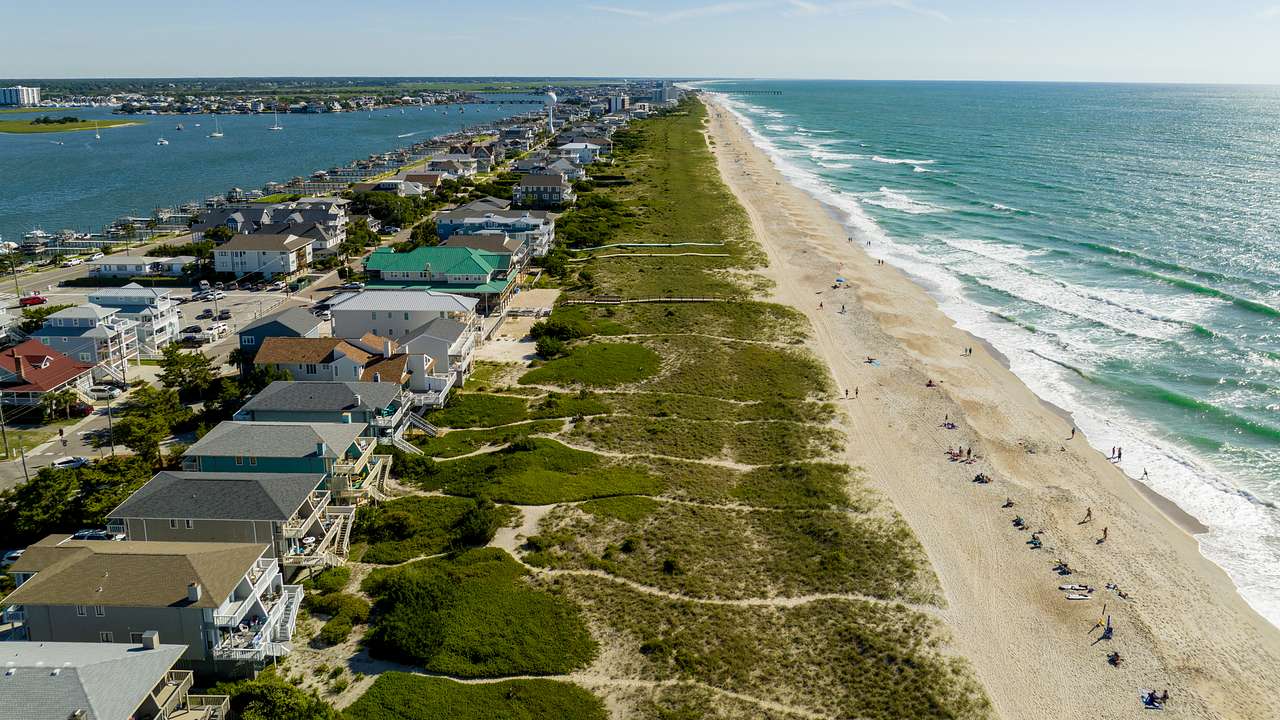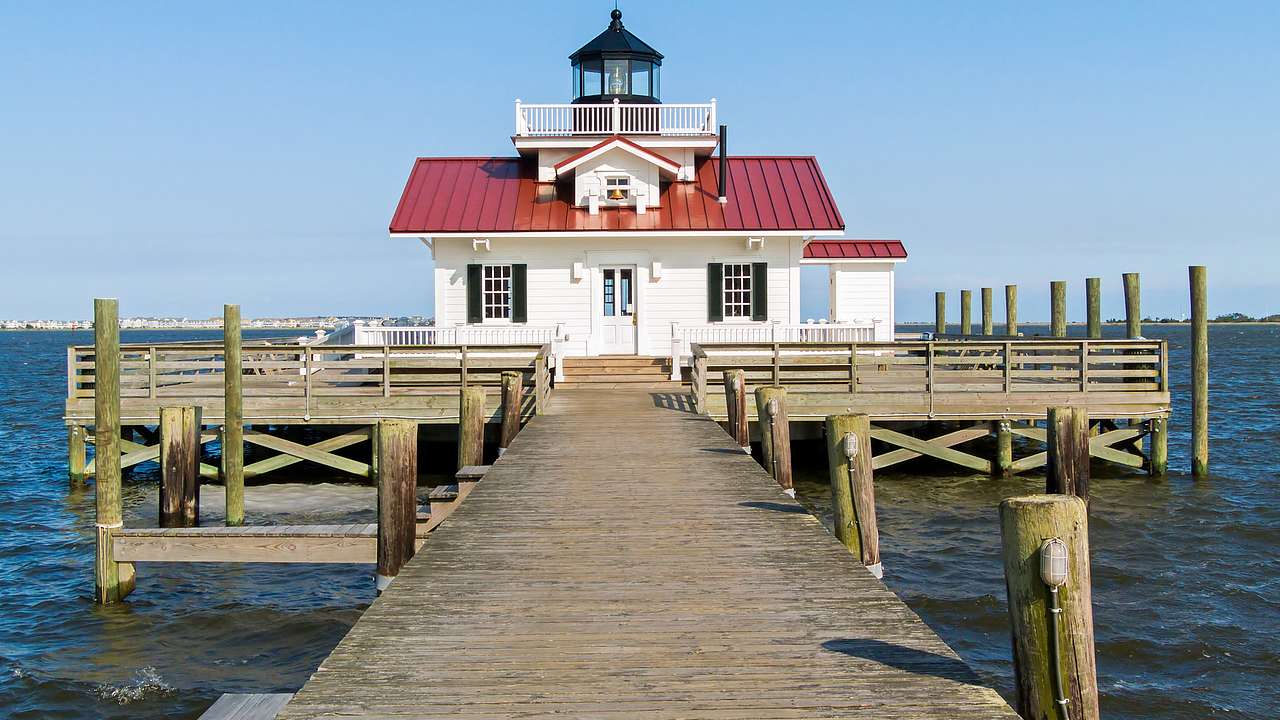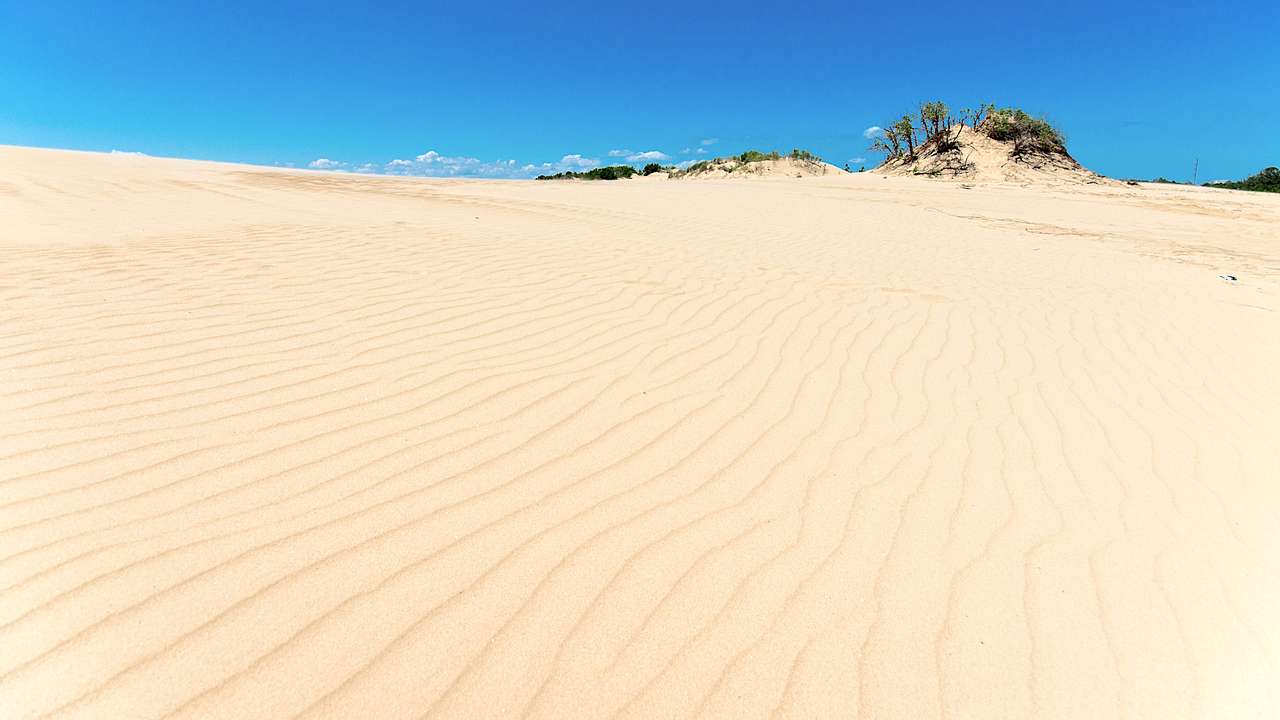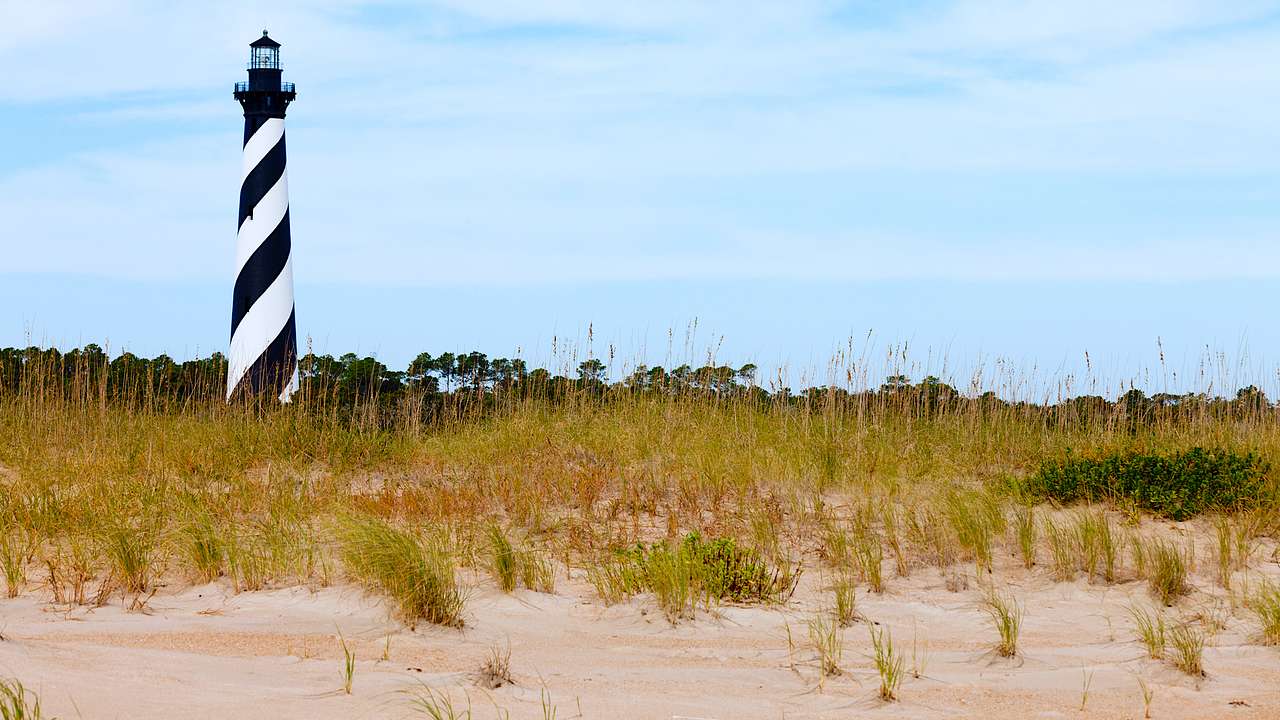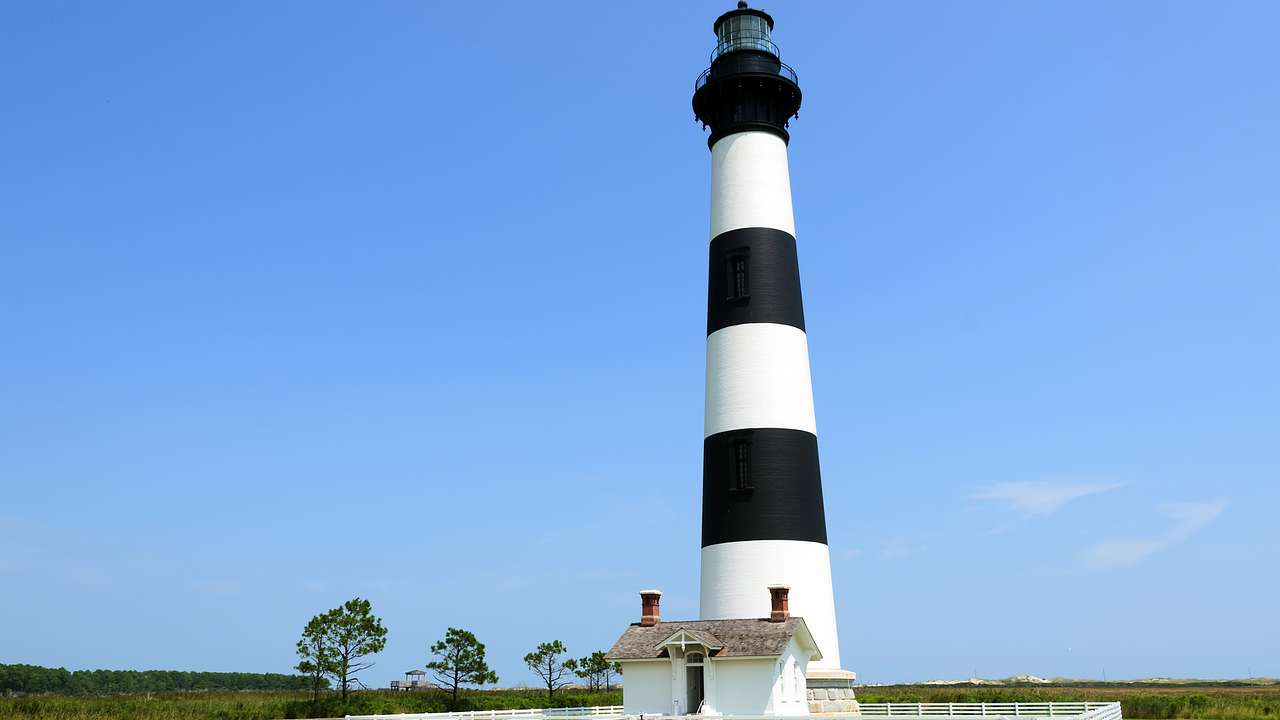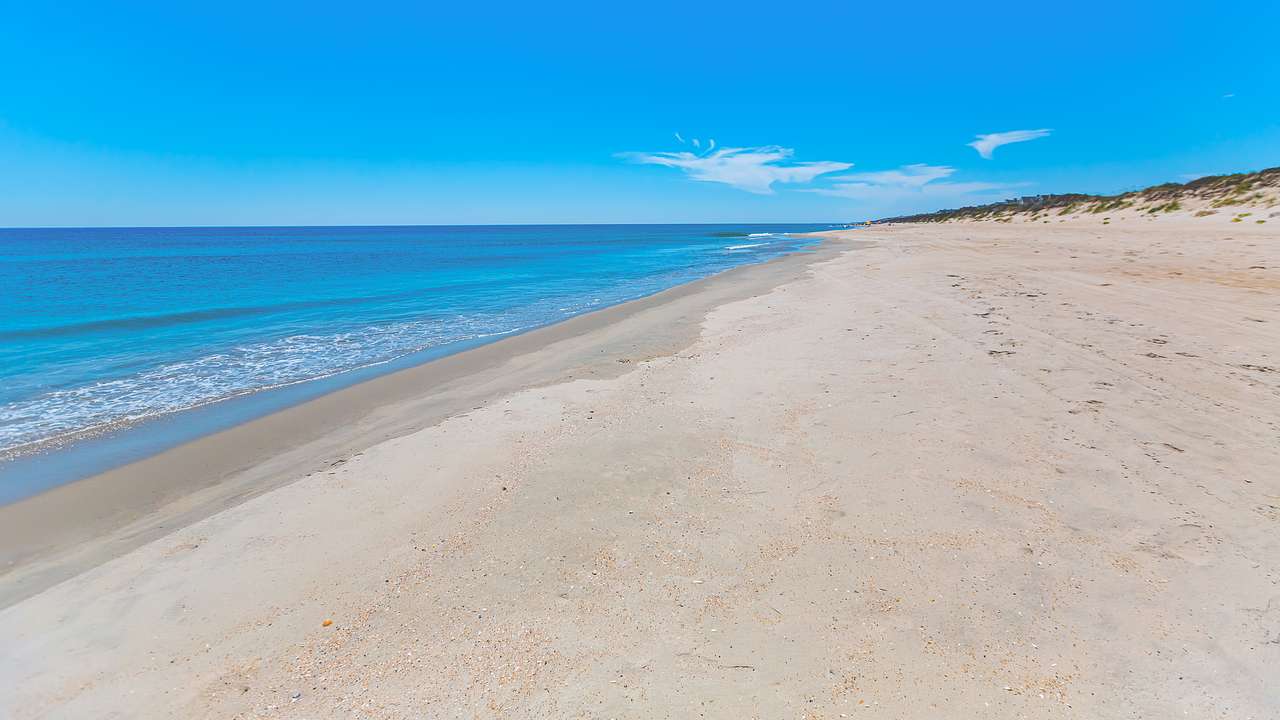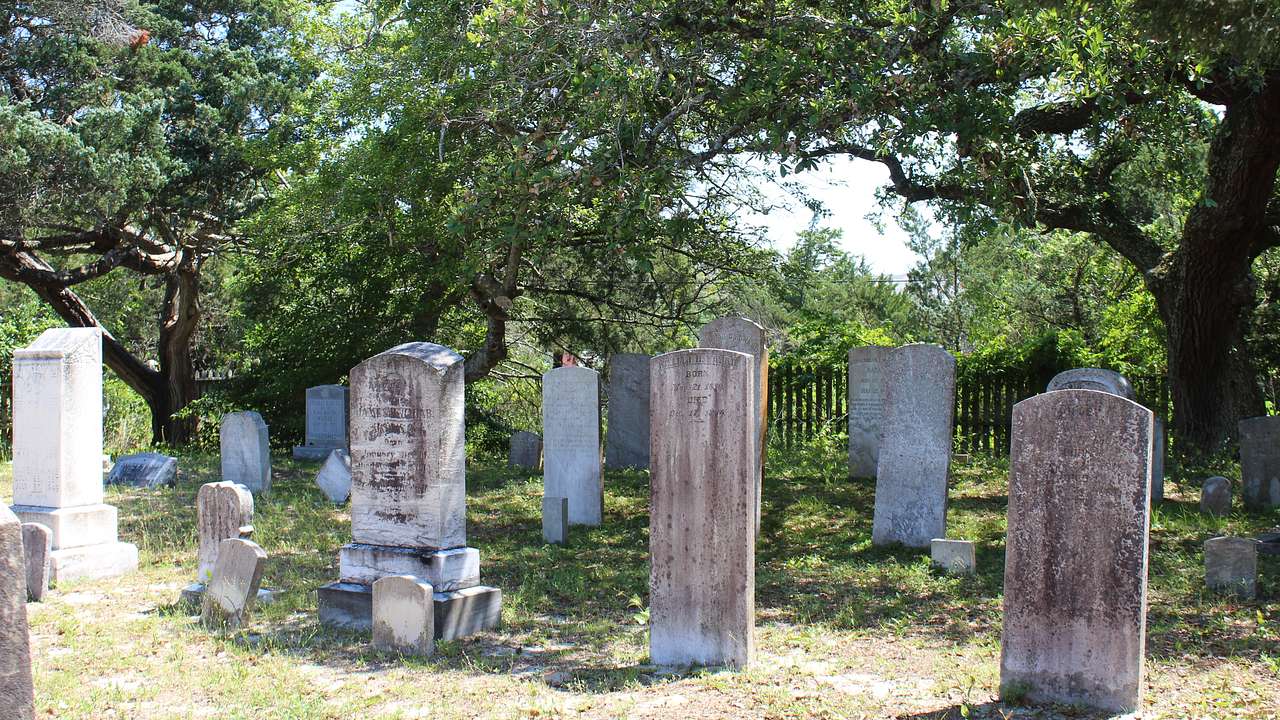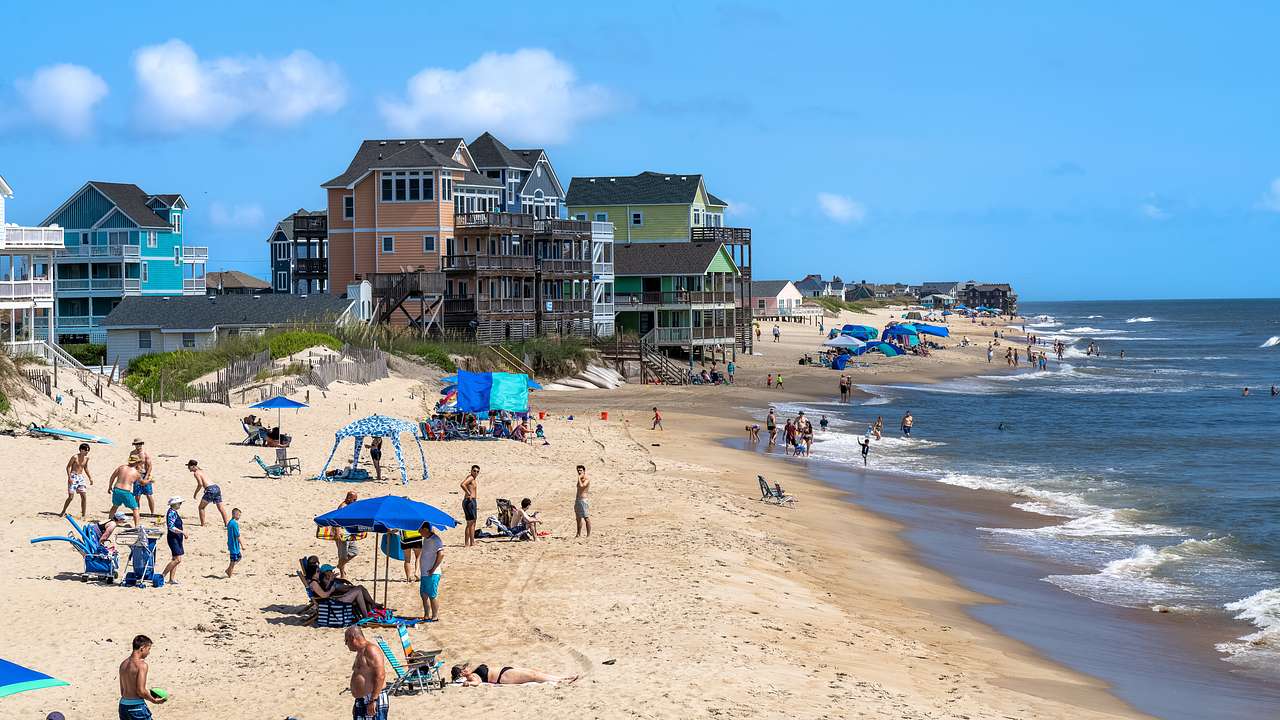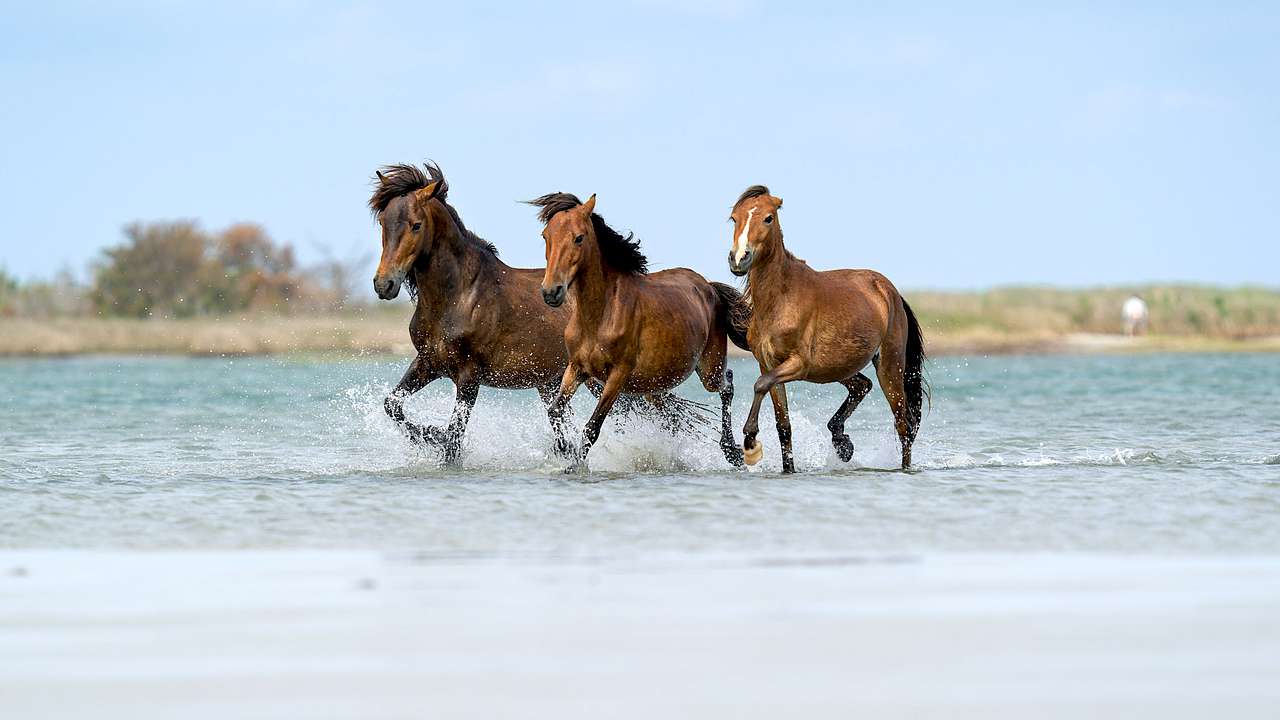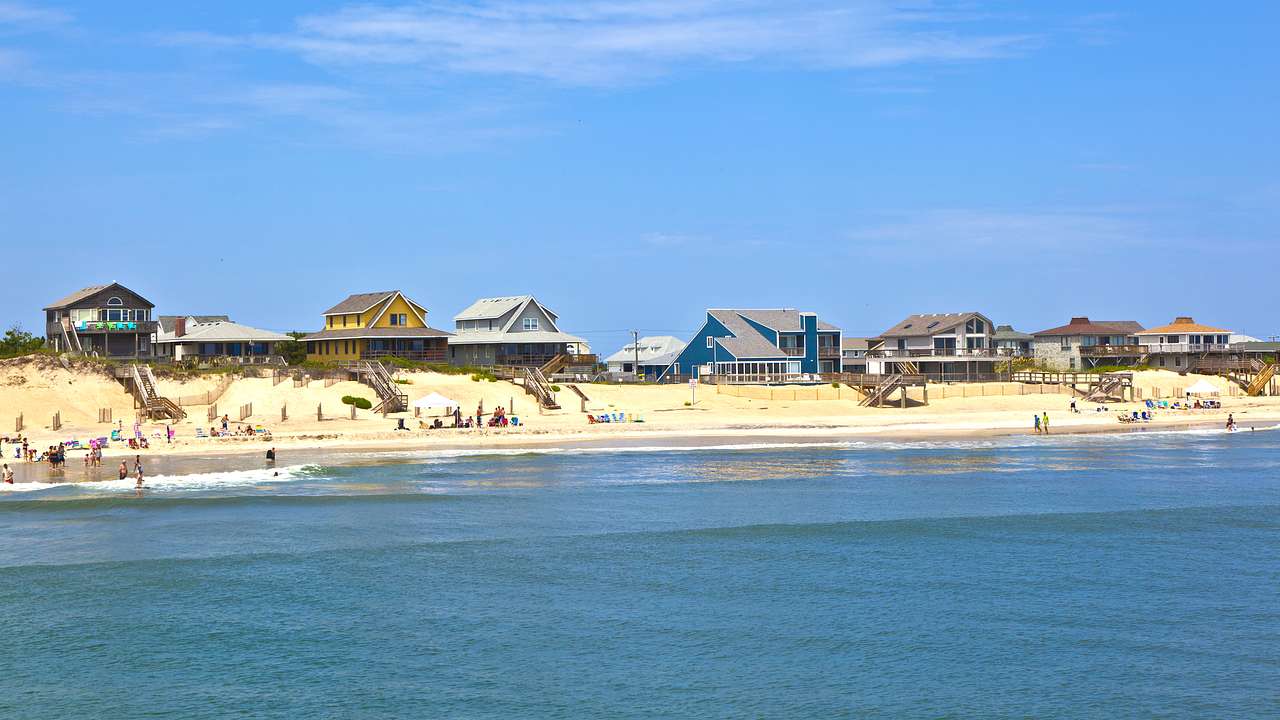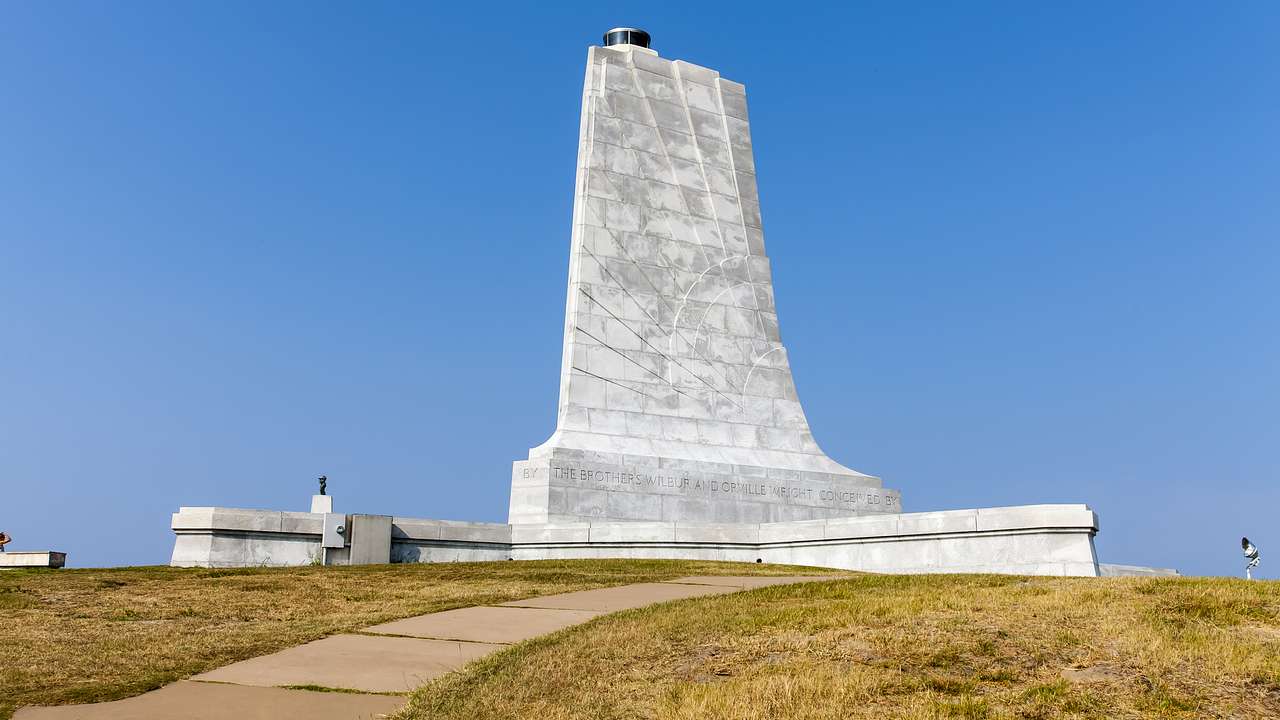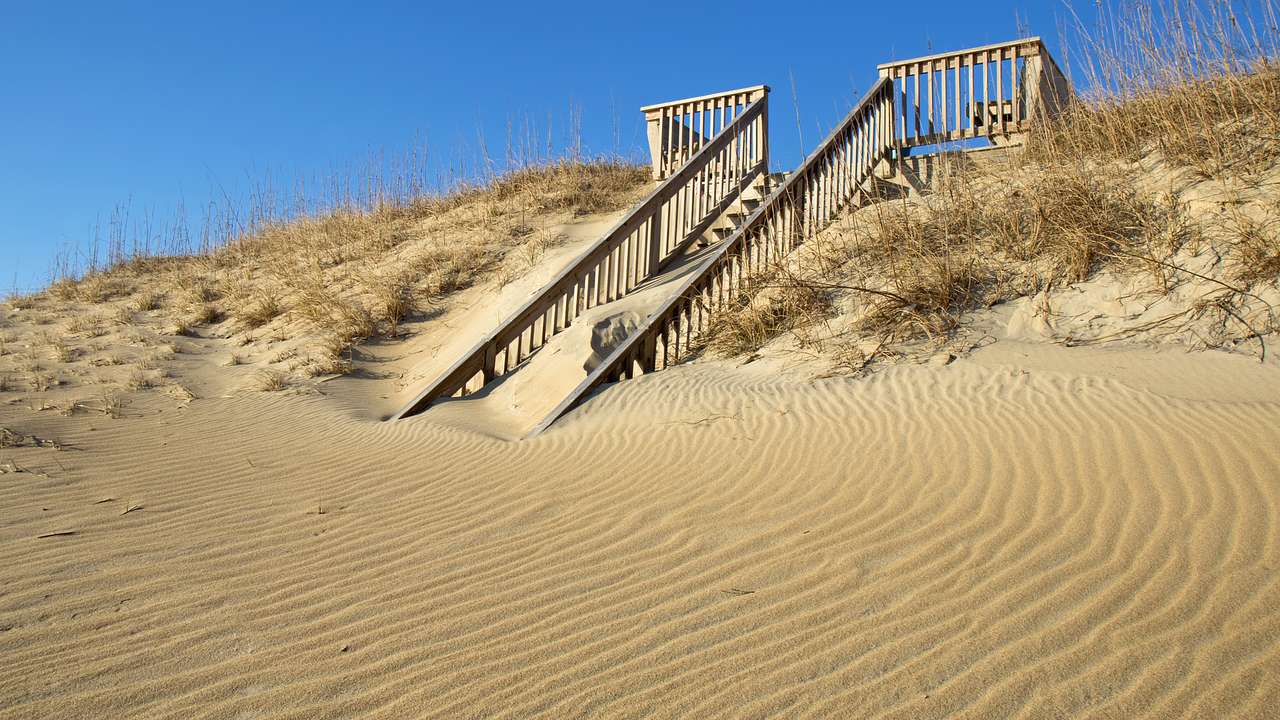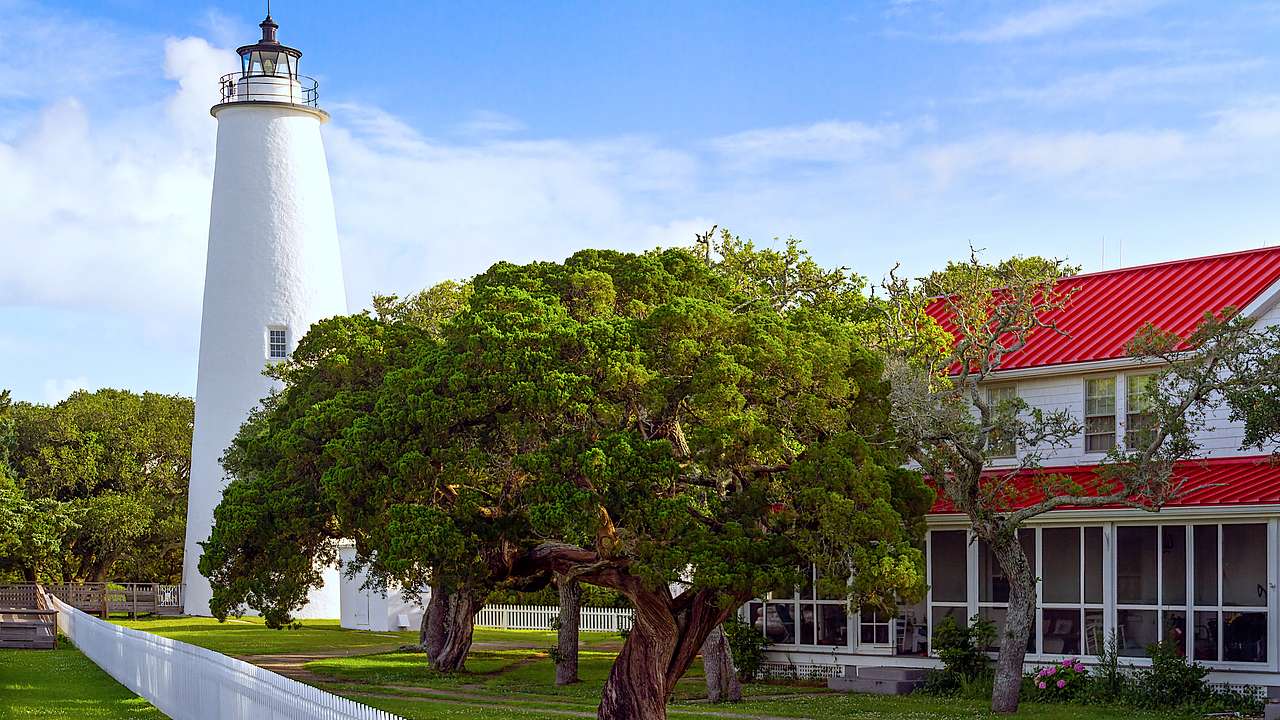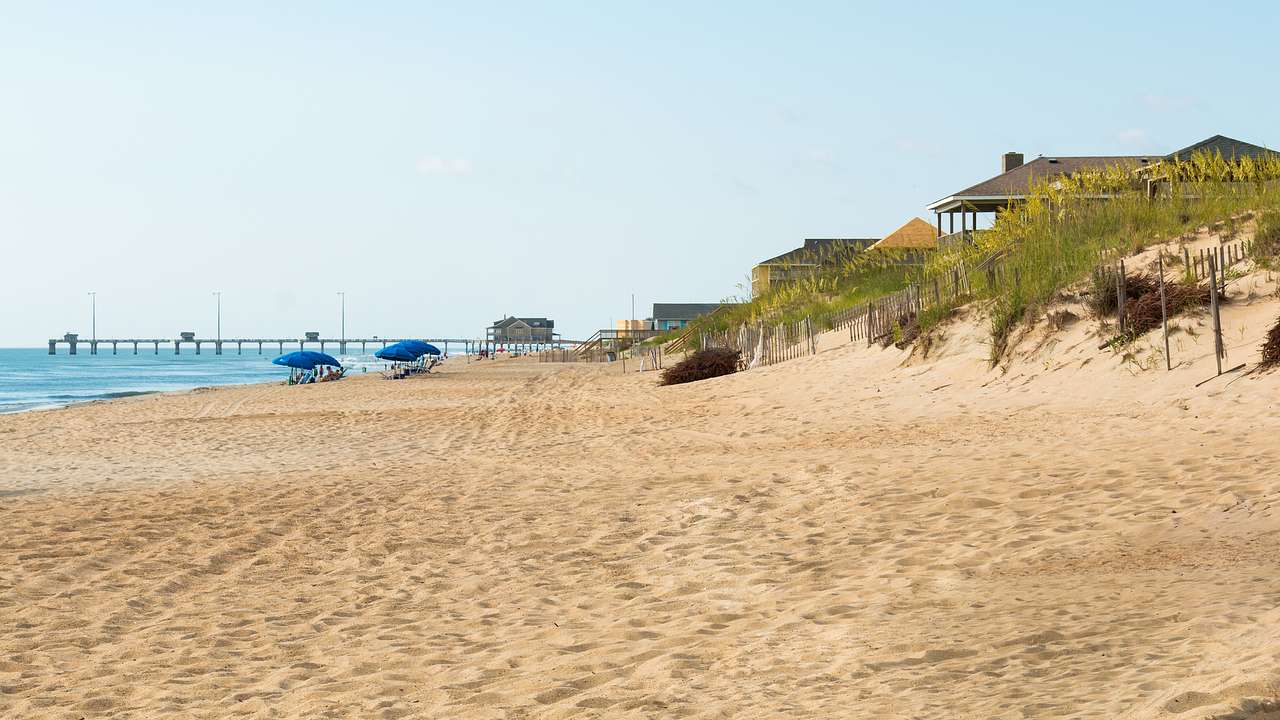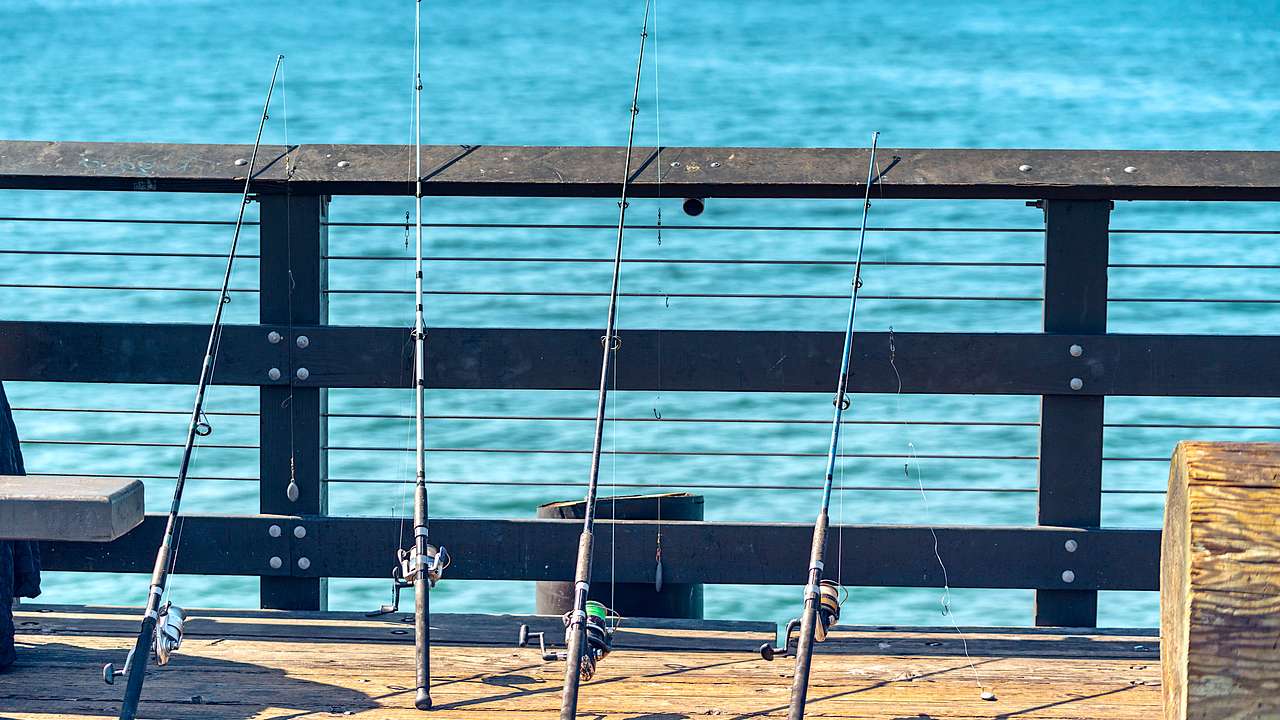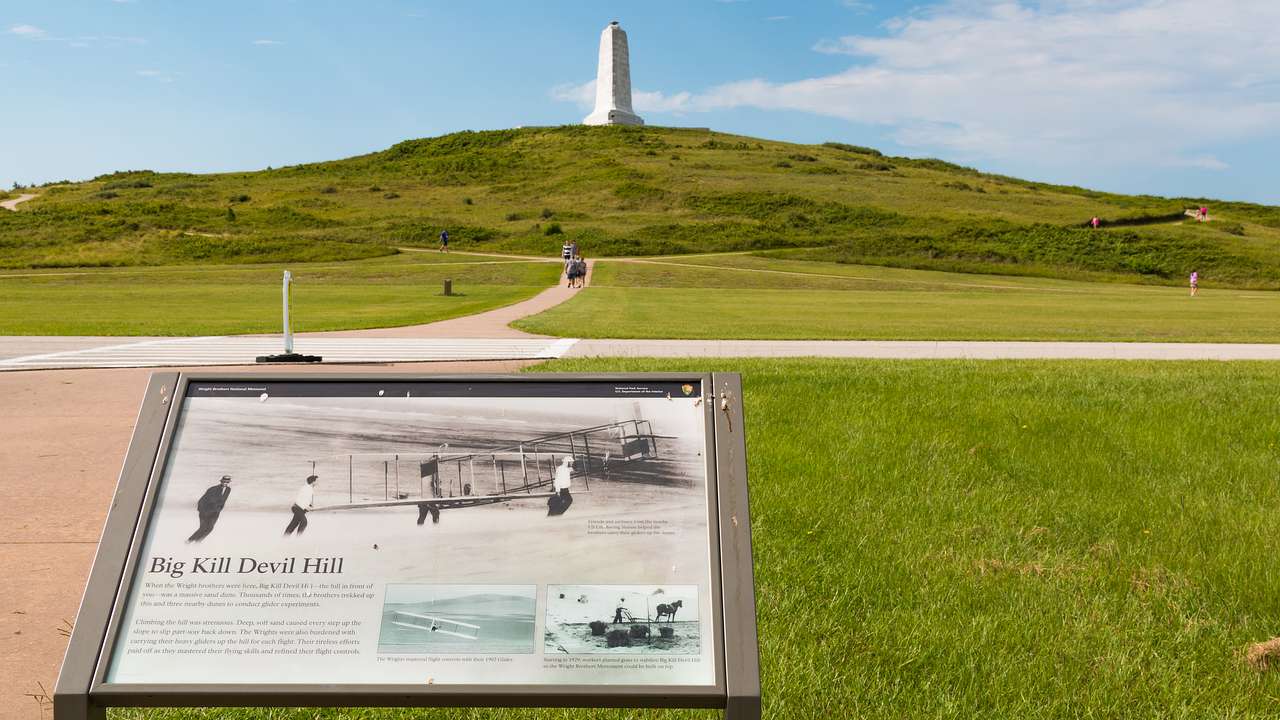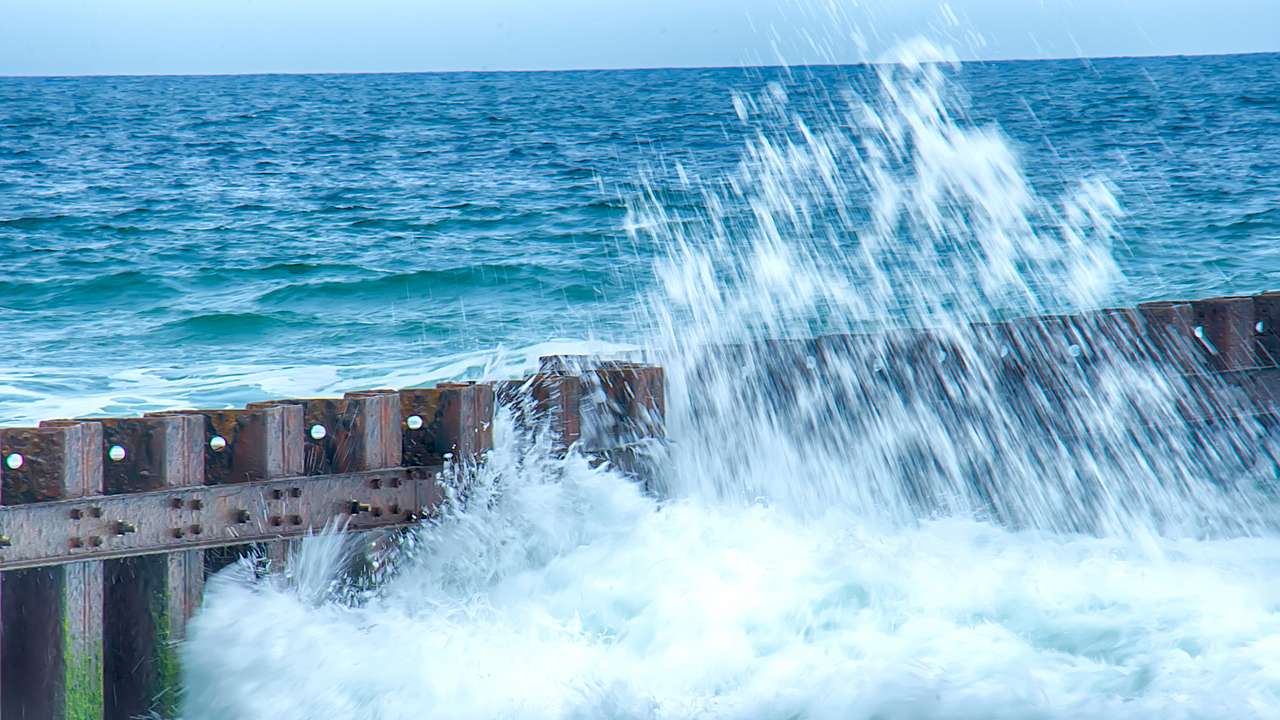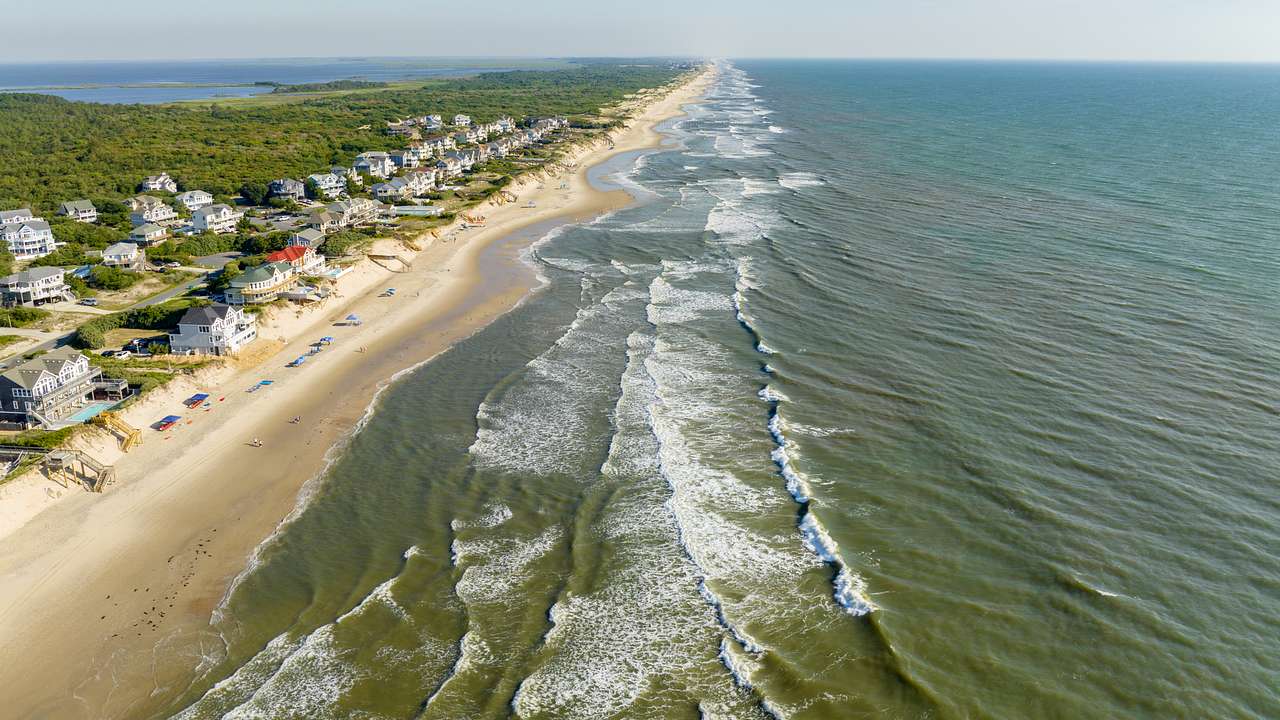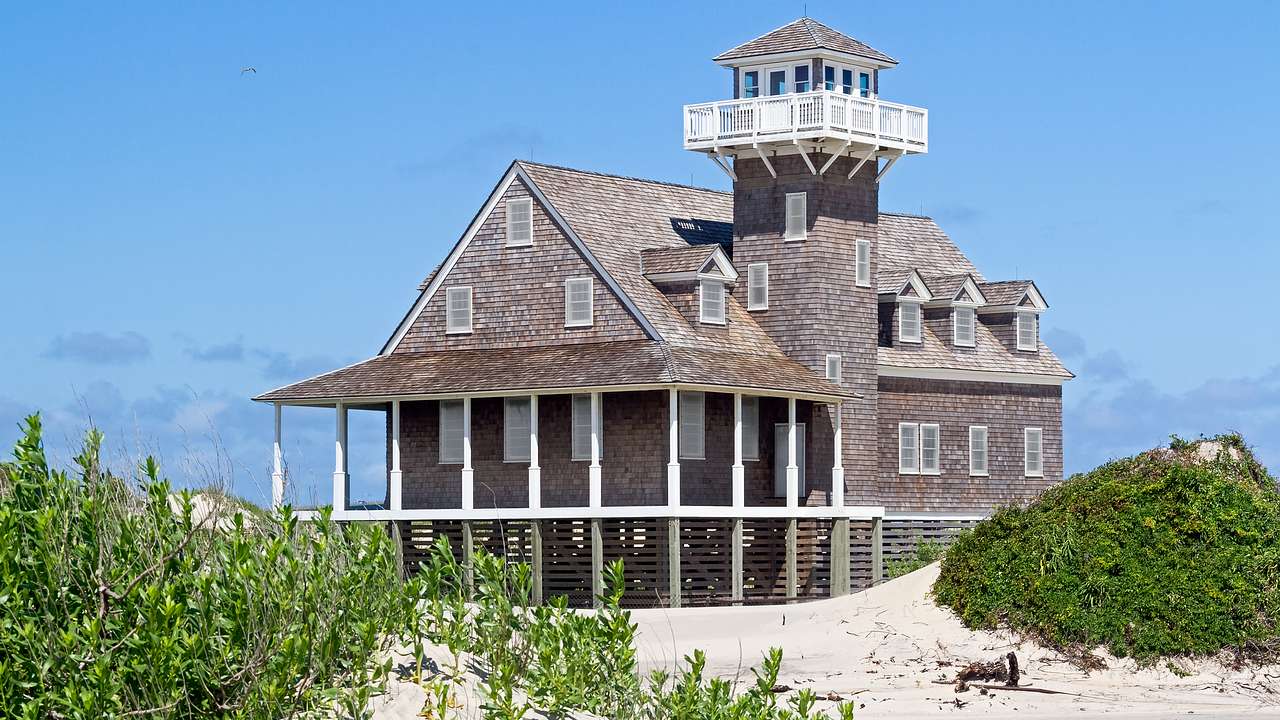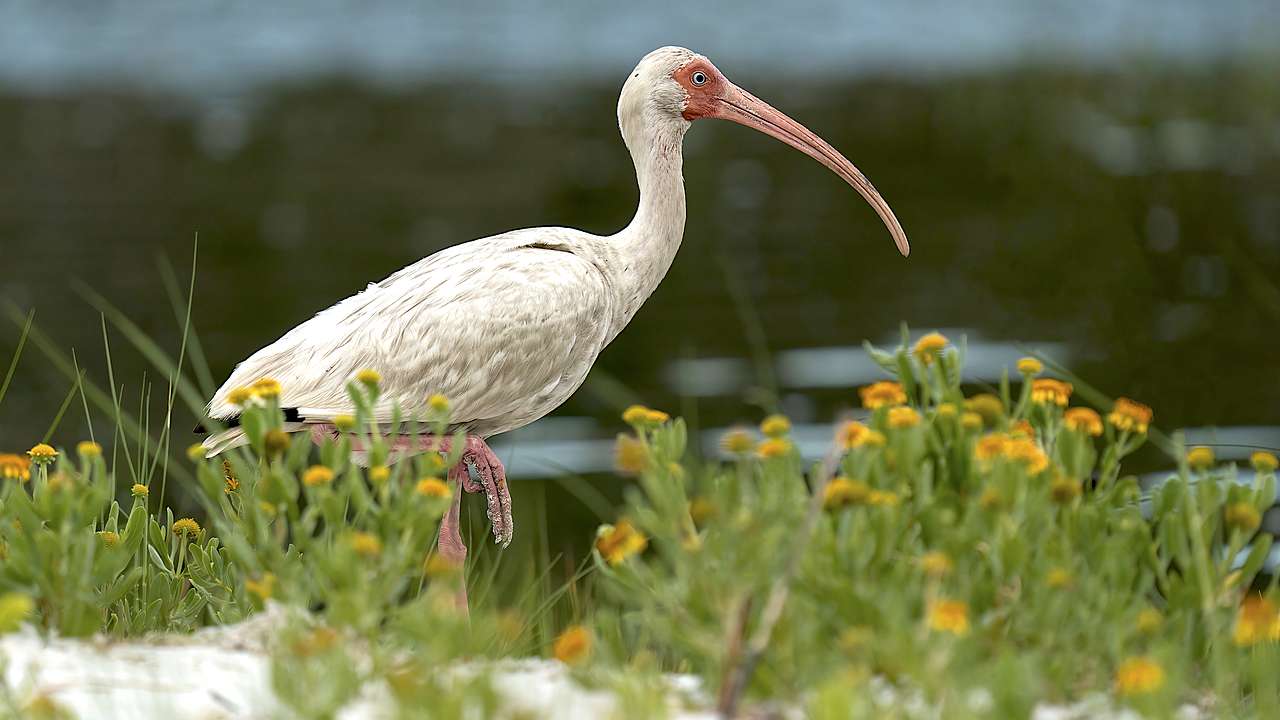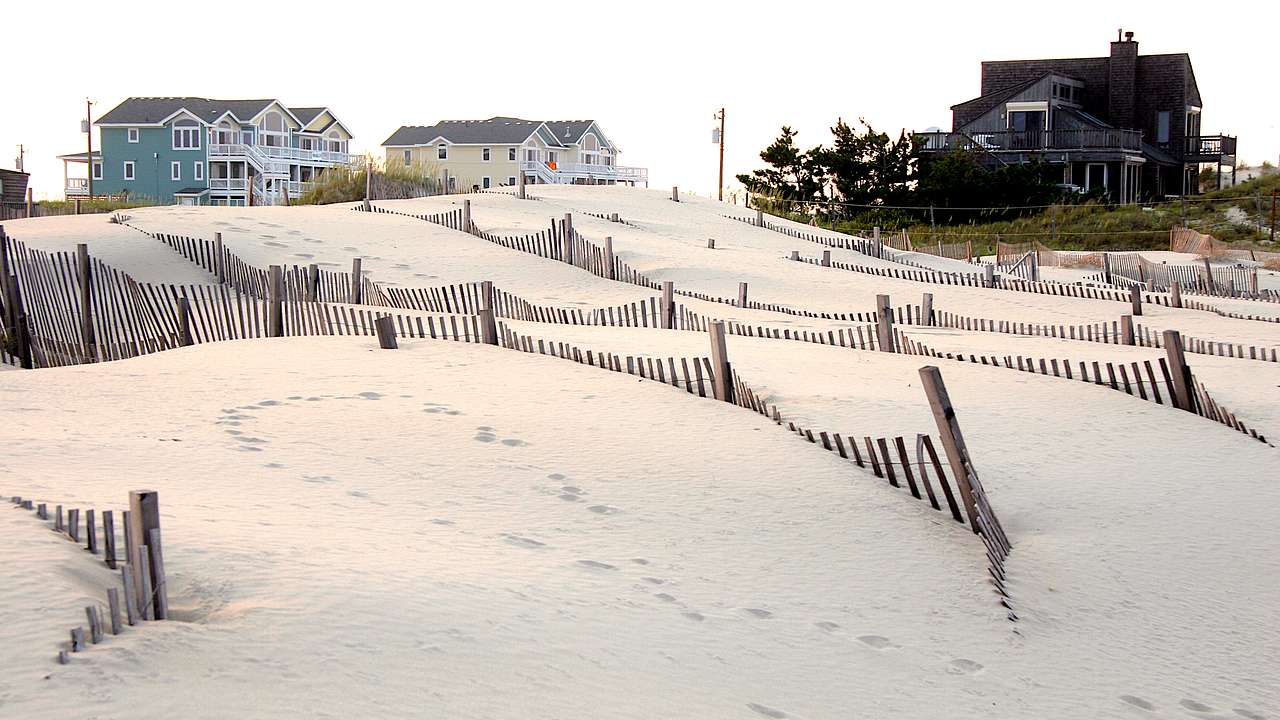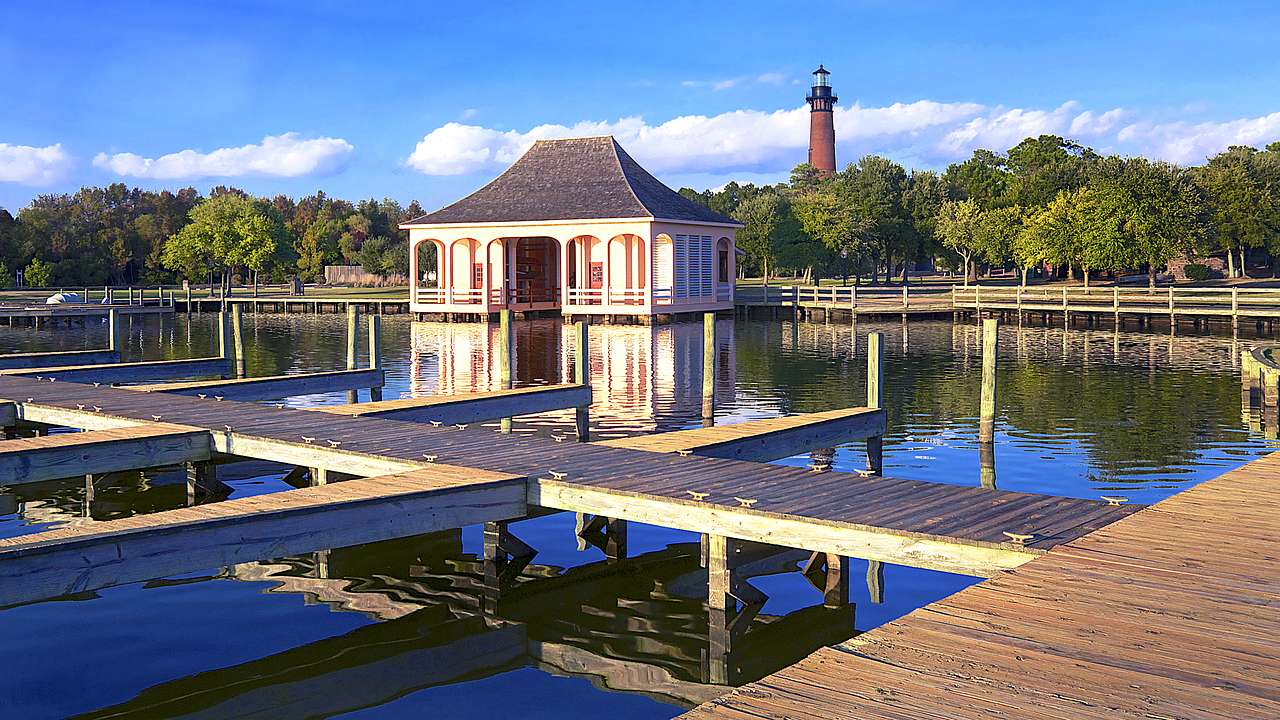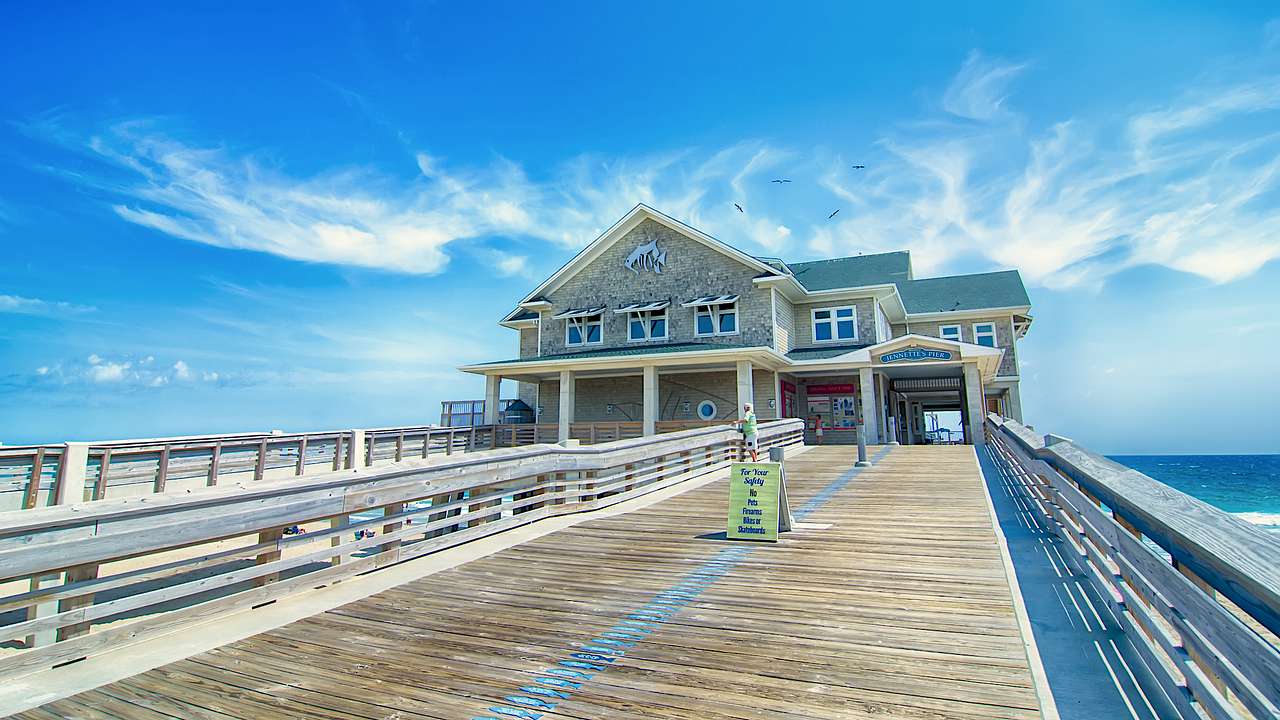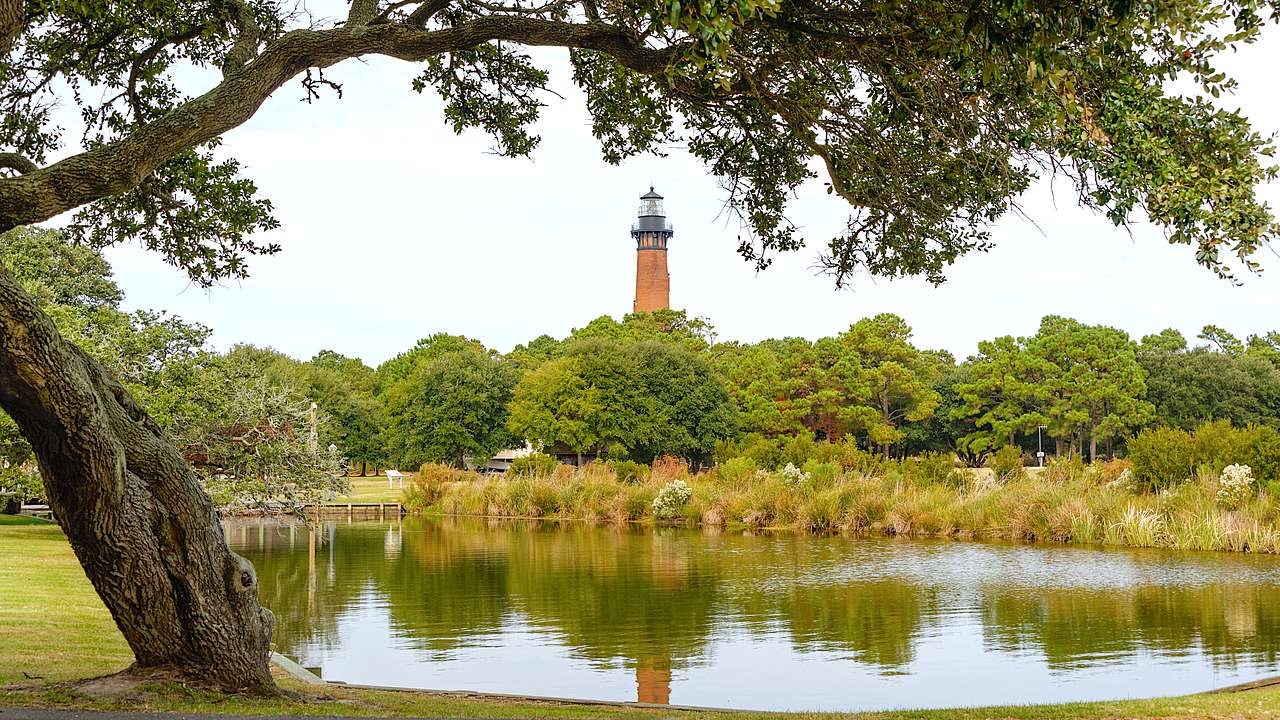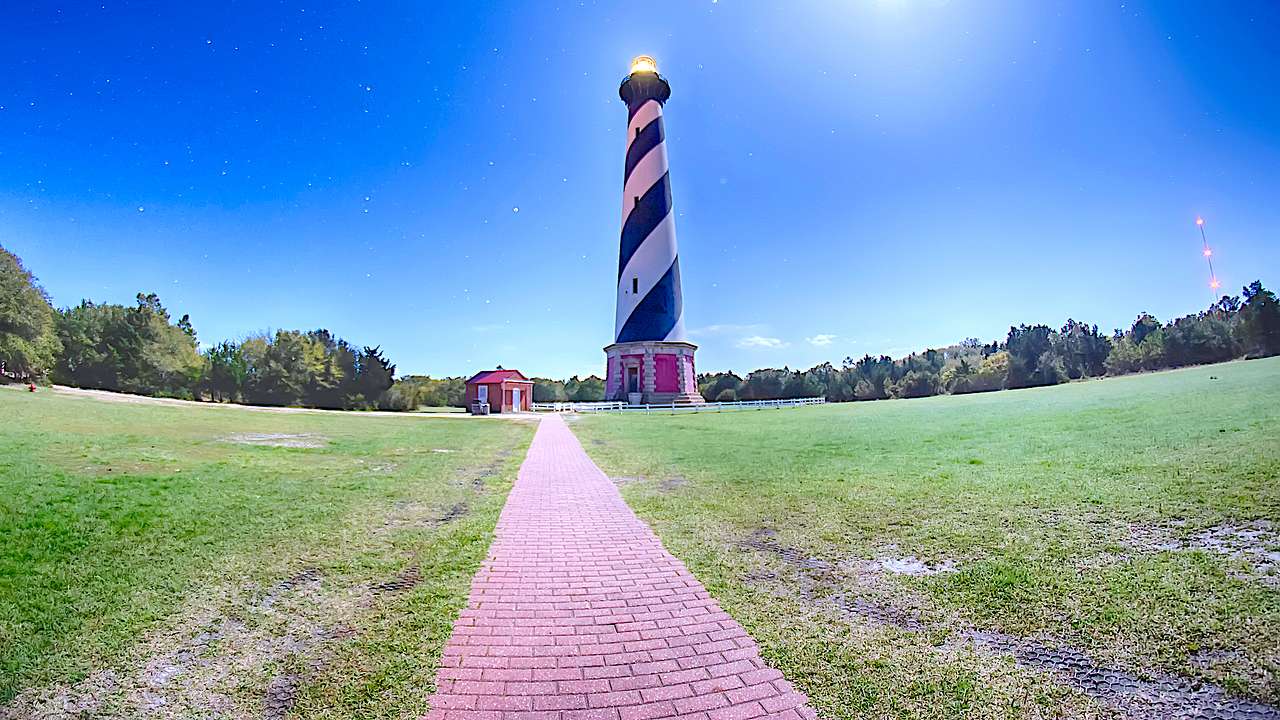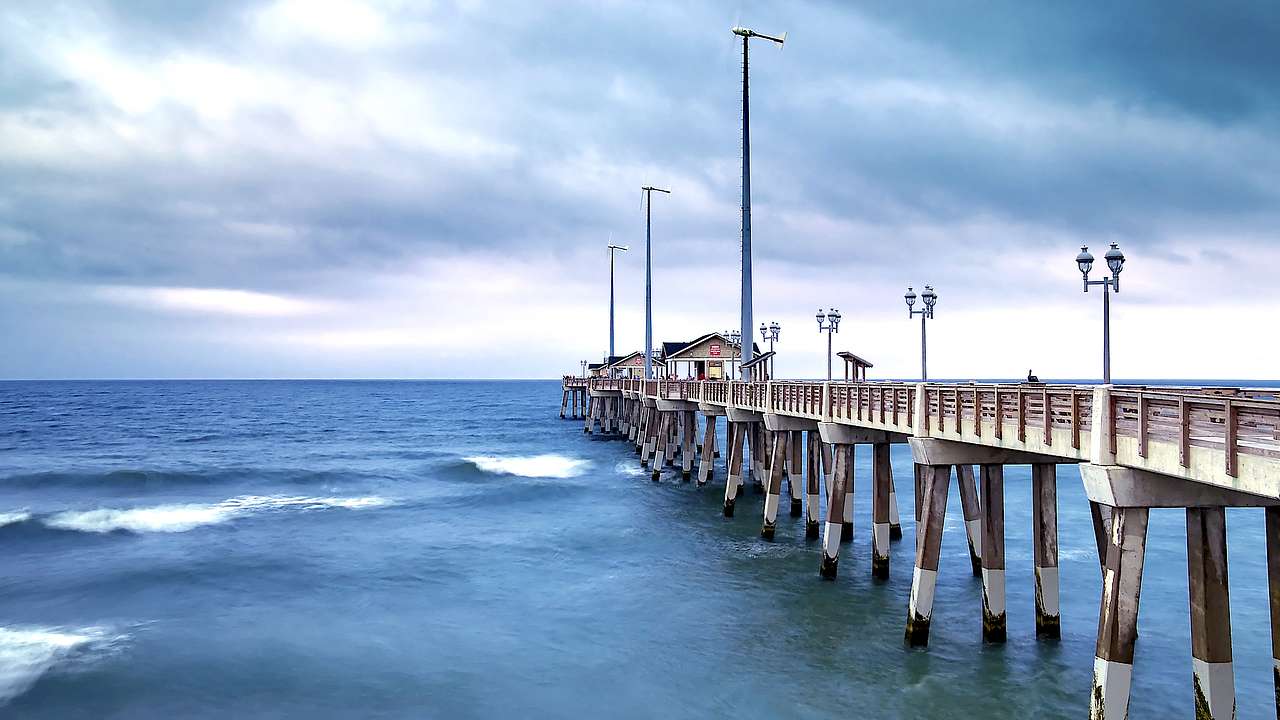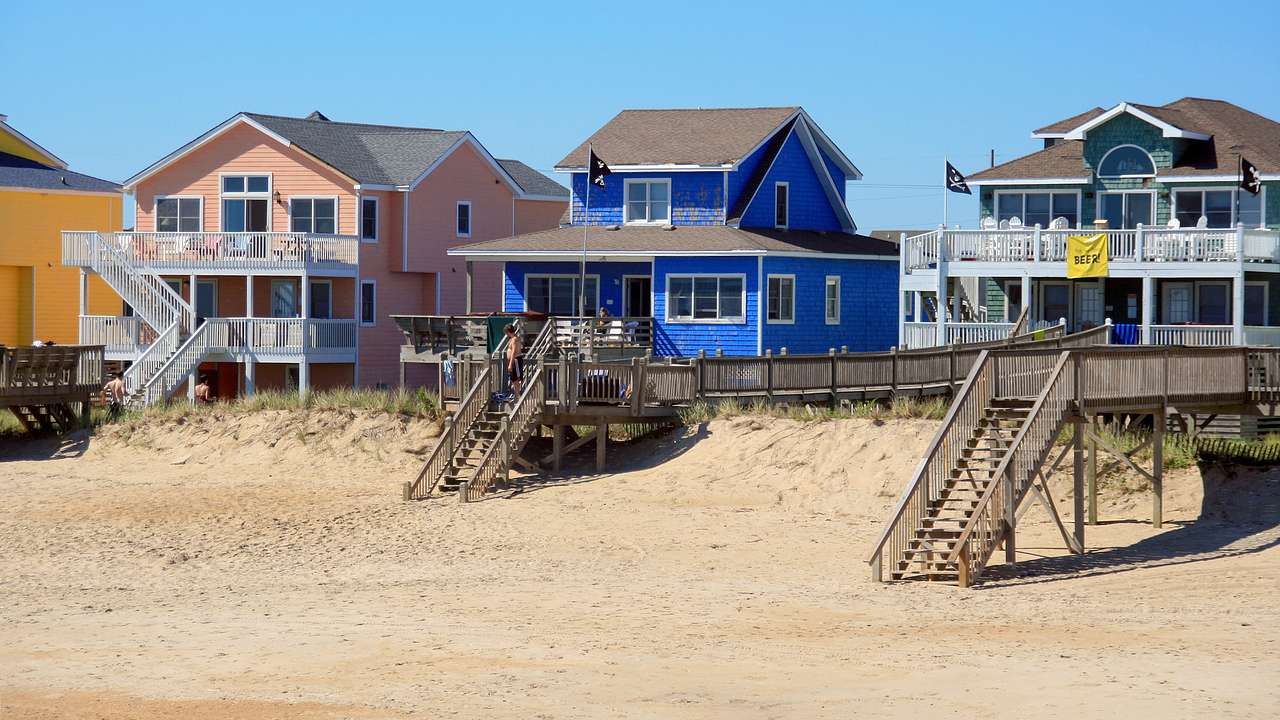45 Fun Facts About the Outer Banks of North Carolina
Destguides may receive commissions from purchases made through affiliate links in this article.
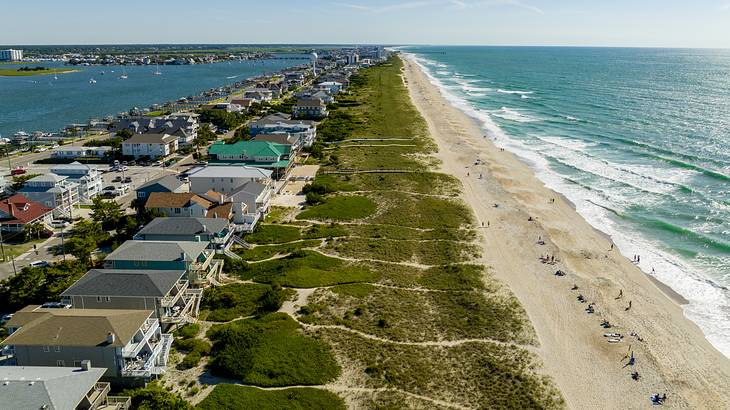
The Outer Banks are found in North Carolina, on the East Coast of the United States. The area comprises multiple Atlantic seaside towns that are extremely popular tourist destinations. The primary 16 towns on the Outer Banks attract tourists due to their pristine beaches, coastal landscapes, and a multitude of attractions.
The region is also rich in history and culture. Therefore, it's no surprise that there are a plethora of Outer Banks fun facts to know!
Interesting facts about the area include those relating to the mystery of the Lost Colony, Blackbeard's legacy, and the Outer Banks' many firsts. Add in the fact that it's the setting for a popular Netflix show and home to one of the US' most delicious donut chains, and you're sure to learn something new about OBX.
If you love the Outer Banks or just want to learn more about this favored vacation spot, read on for 45 fun facts about the Outer Banks of North Carolina!
45 Fun Outer Banks Facts
- The Outer Banks was the settling place of the first English Colony in the US
- That same colony mysteriously vanished
- The first child born to the New World was born on the Outer Banks
- The Outer Banks created the world's longest-running outdoor symphonic drama
- Jockey's Ridge State Park is home to the largest sand dune on the East Coast
- The tallest lighthouse in the US is in Cape Hatteras
- Bodie Island Lighthouse was built three times
- Cape Hatteras National Seashore preserves the coast for future generations
- Ocracoke Island Cemetery is actually on British ground
- The novel and film Nights in Rodanthe was set in the Outer Banks
- The Outer Banks are home to many wild horses
- The US Lifesaving Service was founded on the Outer Banks
- The Outer Banks feature the best windsurfing spots in the world
- The Wright Brothers' first flight was flown in the Outer Banks
- The Outer Banks is a sandbar, not an island
- The oldest and shortest lighthouse in North Carolina is in Ocracoke
- Celebrities love the Outer Banks
- It's an incredible fishing location
- Hatteras is home to many six-toed cats
- Nags Head got its name from pirate folklore
- Kill Devil Hills has an interesting naming story too
- Cape Hatteras is very dangerous for sailors
- The pirate Blackbeard frequented the Outer Banks
- Pea Island employed the first black lifesaving station keeper
- Pea Island National Wildlife Refuge is home to over 300 bird species
- Hatteras received one of the first distress calls from the Titanic
- Many Civil War battles happened in the Outer Banks
- There were two slave safe havens on the Outer Banks
- The Outer Banks has a population of just over 57,000
- Native Americans played a big part in the Outer Banks' history
- Many Outer Banks towns had Native American names
- The Outer Banks is a popular wedding destination
- Experiments for the first radio communication transmission occurred here
- There is a Netflix drama about the Outer Banks
- The Outer Banks show wasn't filmed on the Outer Banks
- Whalehead was a secret testing location for rocket fuel
- The Outer Banks have the most stunning maritime forests in the US
- The Whalehead Club housed US soldiers
- Cape Hatteras Lighthouse has been moved
- The Outer Banks are under threat from climate change
- OBX is somewhat of an advertising term
- The Oldest Grapevine in the US is found in OBX
- The Outer Banks briefly had an extra island
- Some former Outer Banks residents make money from shipwrecks
- Duck in the Outer Banks is the founding town of a popular donut chain
Outer Banks Facts Video
Check out our highlights video of Outer Banks facts.
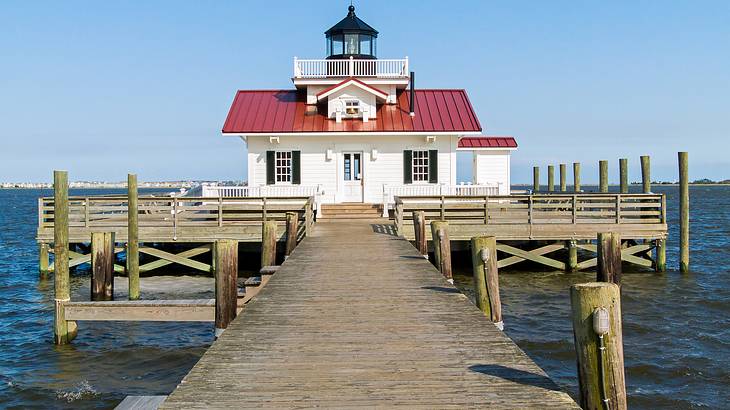
The Outer Banks was the settling place of the first English Colony in the US
Roanoke Island is where the first English colony settled in North America. Roanoke Colony was founded in 1585 by Sir Walter Raleigh and was inhabited by approximately 100.
As children were born, this grew to between 112 and 121. Mysteriously, the entire colony disappeared just a few years later, between 1587 and 1590.
That same colony mysteriously vanished
In 1587, settler John White left the Roanoke Colony on an expedition. Upon his return in 1590, he found the settlement deserted. Unable to determine what happened, the colony gained the nickname "The Lost Colony."
The settlers' disappearance remains the United States' oldest unsolved mystery. Some believe they moved on, while others think they died from poor conditions or Native American attacks.
The first child born to the New World was born on the Outer Banks
The first English child of the New World was born in 1587 in the Roanoke Colony. She was named Virginia Dare and was the granddaughter of John White.
Nobody knows what happened to Virginia, but many people believe the Croatan Native American tribe took her in. Present-day Dare County is named after her.
The Outer Banks created the world's longest-running outdoor symphonic drama
An outdoor play called The Lost Colony premiered in 1937. It is traditionally performed at the Waterside Theater on Roanoke Island.
In 2017, it was in its 80th season, making it the longest-running outdoor symphonic drama in the world. The play covers the history of the Roanoke Colony.
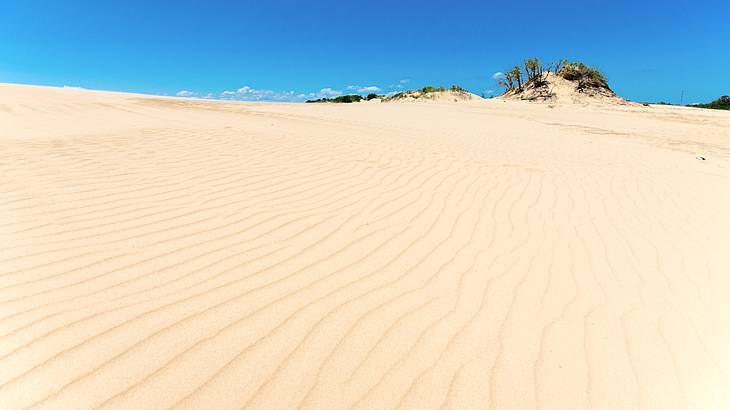
Jockey's Ridge State Park is home to the largest sand dune on the East Coast
Jockey's Ridge State Park in Nags Head on the Outer Banks features the tallest sand dune system on the East Coast of the US. The sand dunes have peaks of over 90 feet. This park is also the most visited in North Carolina.
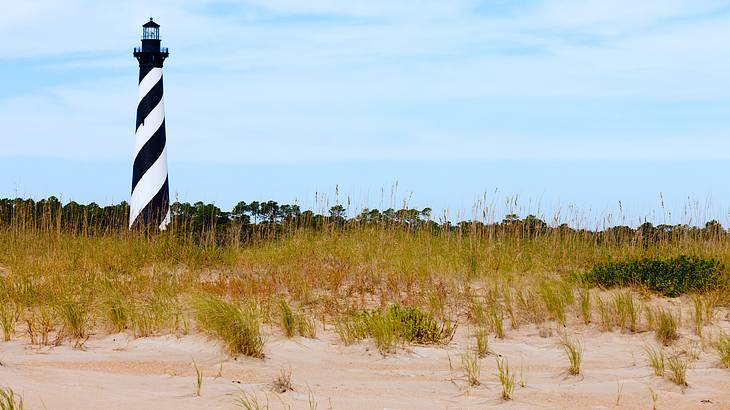
The tallest lighthouse in the US is in Cape Hatteras
This Outer Banks fun fact is about Cape Hatteras. The town is home to the United States' tallest brick lighthouse, the Cape Hatteras Lighthouse. It was built in 1872 and stands at 210 feet tall. The lighthouse is also the second tallest in the world. It features a unique black and white swirl pattern.
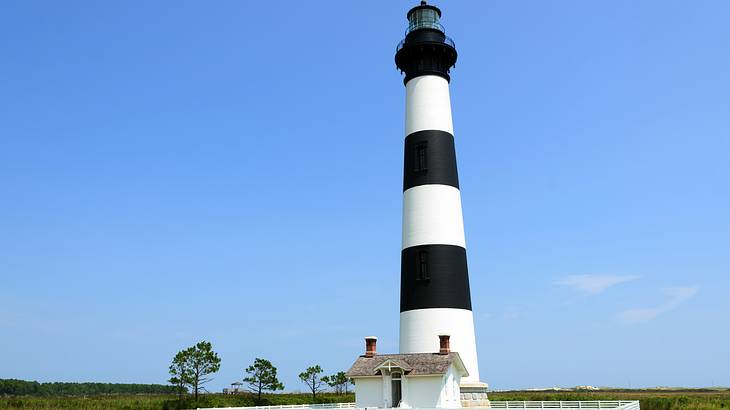
Bodie Island Lighthouse was built three times
A lesser-known lighthouse, the Bodie Island Lighthouse, has a fascinating history. The lighthouse that stands today is the third version.
The first lighthouse was constructed in 1847, although it was demolished and rebuilt in 1859. It was then destroyed in the Civil War and built again in 1871. That lighthouse still stands today.
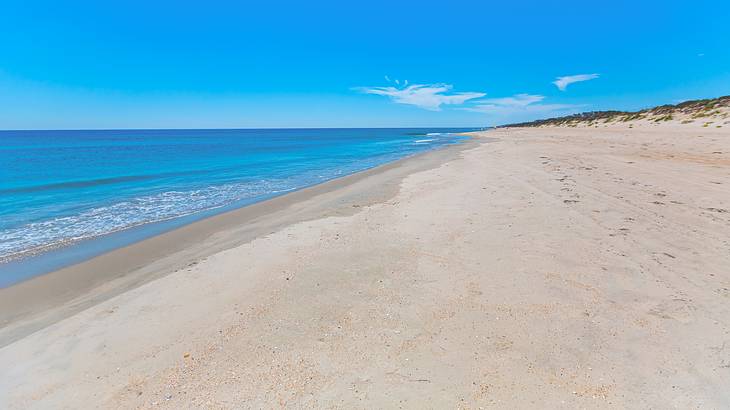
Cape Hatteras National Seashore preserves the coast for future generations
The Cape Hatteras National Seashore is stunning and attracts millions of visitors a year. But most don't know that the government has a program to preserve the shoreline for future generations. Running for 28,000 acres along the Outer Banks, Cape Hatteras National Seashore acts as a protected conservation area.
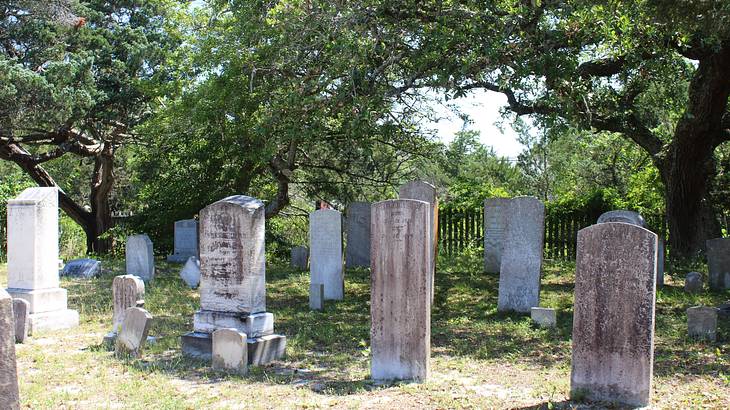
Ocracoke Island Cemetery is actually on British ground
When in Ocracoke, you can visit Britain! In a way. The British Cemetery of Ocracoke holds the remains of four British WWII soldiers.
The particularly interesting part is that the cemetery is technically on British soil as the land is perpetually leased to the British Commonwealth.
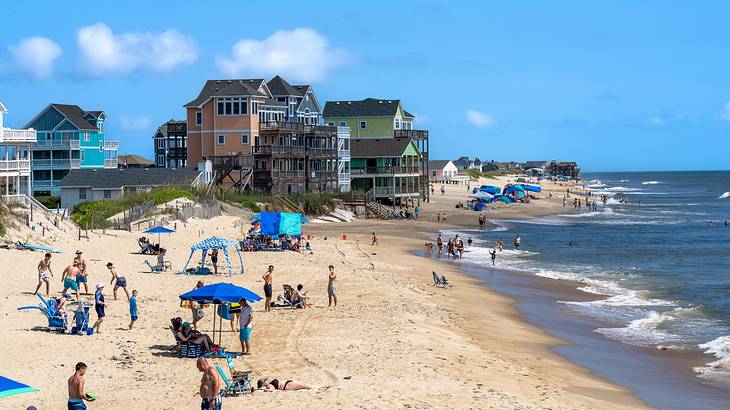
The novel and film Nights in Rodanthe was set in the Outer Banks
Rodanthe on the Outer Banks was the inspiration for the Nicholas Sparks novel and subsequent movie Nights in Rodanthe. The story features two strangers who meet at a Rodanthe inn during difficult times in their lives and begin a romance. The movie stars Richard Gere and Diane Lane.
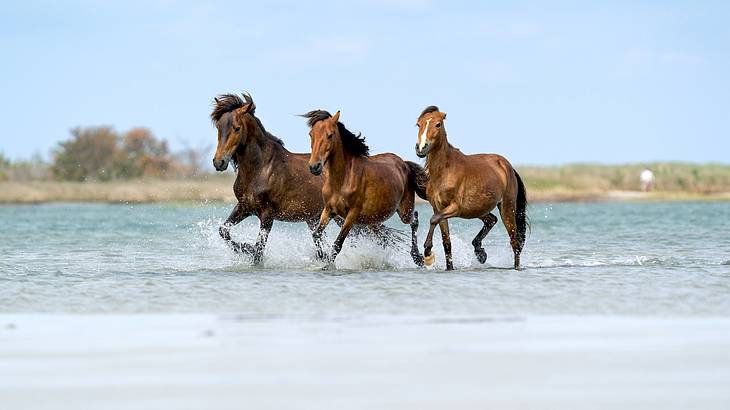
The Outer Banks are home to many wild horses
One of the Outer Banks, North Carolina facts for animal lovers is that wild horses inhabit a few areas in Outer Banks towns.
The most well-known species is the Colonial Spanish Mustang. These horses inhabit the beaches of Corolla. It's thought that the horses arrived in the 1500s after surviving shipwrecks, and their descendants still roam today.
The US Lifesaving Service was founded on the Outer Banks
The ocean plays a big part in Outer Banks' history, and this fun fact is no exception. In 1874, the first US Lifesaving Services were founded along the Outer Banks.
Seven were constructed in total and placed here due to the Outer Banks having some of the most dangerous waters on the Eastern seaboard.
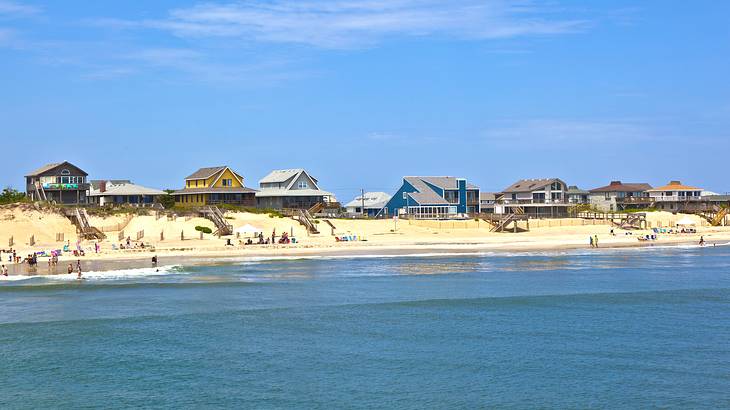
The Outer Banks feature the best windsurfing spots in the world
The Outer Banks is a windsurfing paradise. The combination of shallow waters, rolling waves, and wind velocities of 11 to 15 miles per hour create perfect windsurfing conditions.
Luckily, the conditions are ideal for all skill levels, from novice to expert. Therefore, everyone can give windsurfing a try in the Outer Banks.
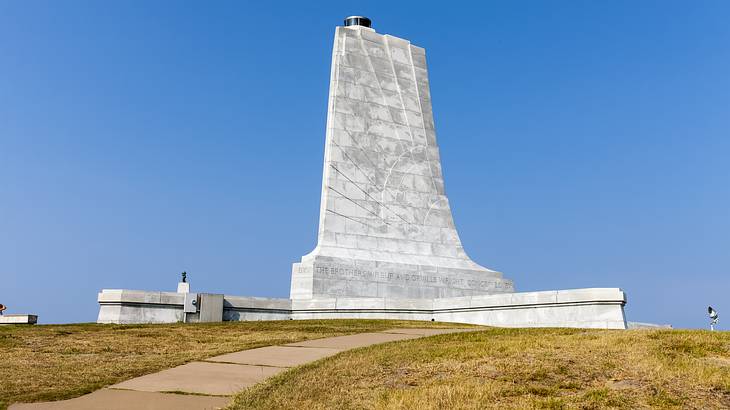
The Wright Brothers' first flight was flown in the Outer Banks
An interesting fact about North Carolina is that both the Wright Brothers' first ever flight and their first powered flight were flown on the Outer Banks.
The latter happened in Kill Devil Hills (where you can find the Wright Brothers National Memorial), while the former occurred in Kitty Hawk. The soft sands made the perfect testing ground as the impact would be low if they crashed.
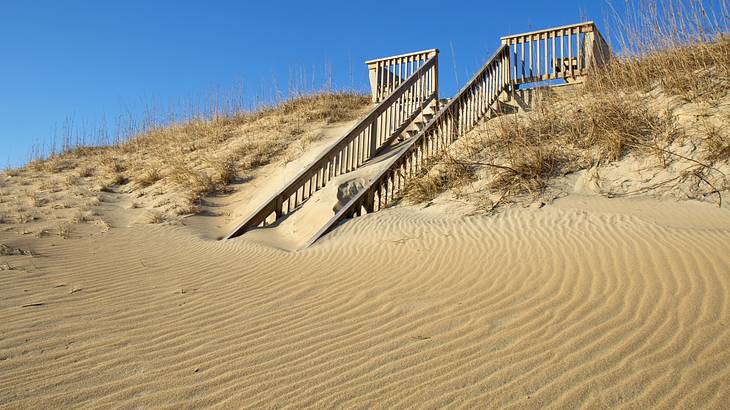
The Outer Banks is a sandbar, not an island
While many think that the Outer Banks is an island, it's actually a sandbar. The Outer Banks chain of sandbars comprises sediment and sand; therefore, it's not attached to anything like an island is.
It's thought the Outer Banks formed over 18,000 years ago when the Ice Age ended. As the ice melted, sea levels rose and surrounded the sediment banks, causing the Outer Banks "islands" to form.
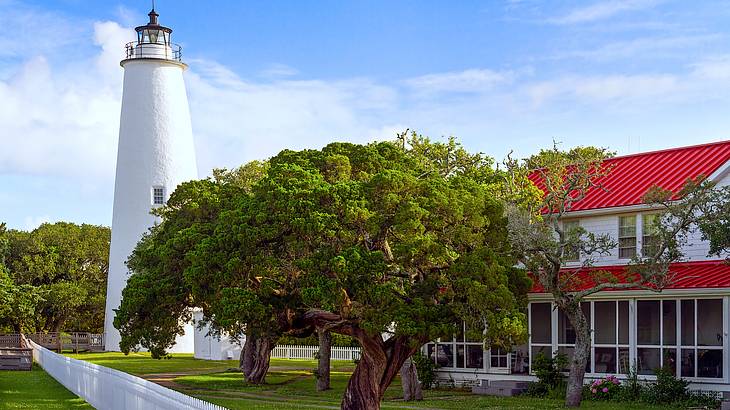
The oldest and shortest lighthouse in North Carolina is in Ocracoke
The Outer Banks isn't just home to the tallest lighthouse in the US; it's also home to the shortest lighthouse in North Carolina.
The Ocracoke Lighthouse is also the oldest in operation lighthouse in the state and the second oldest in the US. Built in 1827, it stands at just 65 feet tall.
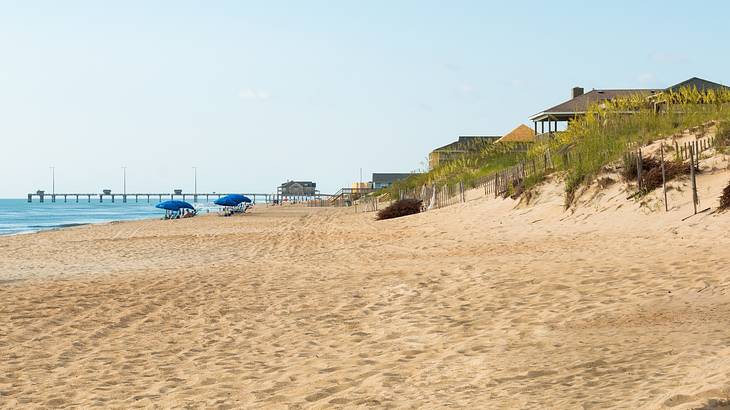
Celebrities love the Outer Banks
This Outer Banks fun fact will have you keeping an eye out for star-studded vacationers during your visit! Celebrities that visit OBX include Sandra Bullock, Michelle Pfeiffer, Whoopi Goldberg, and Rob Lowe. There are rumors that Tom Cruise has a secluded beach house here too.
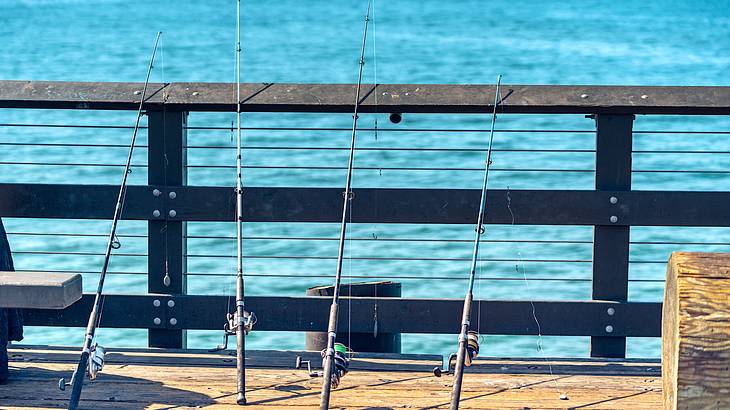
It's an incredible fishing location
Another of many fascinating facts about the Outer Banks, North Carolina, is that it is a world-class fishing location. The fish here are known to be large in size and abundant. Most notably, it's one of the best places in the world to catch Atlantic Blue Marlin, especially those weighing over 1,000 pounds.
Hatteras is home to many six-toed cats
Those visiting Hatteras Island's Burrus Red & White Supermarket will have noticed the cats that hang out on the front porch. What's interesting is that most of these cats have six toes! It's thought that their six-toed ancestors arrived on ghost ships hundreds of years ago, and the unique feature has been passed down generations.
Nags Head got its name from pirate folklore
The Outer Banks are rich in pirate history. The town of Nags Head even got its name from pirate tales. The pirates of the Outer Banks would lure ships in and run them aground to rob them. To do this, they would tie lanterns to old horses' necks, and these horses were called nags. That's where Nags Head comes from!
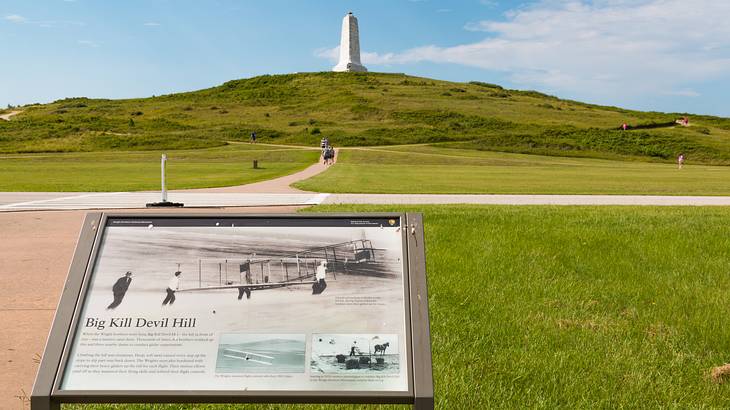
Kill Devil Hills has an interesting naming story too
Kill Devil Hills got its name from folklore stories too. Most believe the name comes from a popular rum called Kill Devil. Stories go that barrels of the rum washed into the waters after a shipwreck or that scavengers found the rum and hid it in sand dunes (hills.)
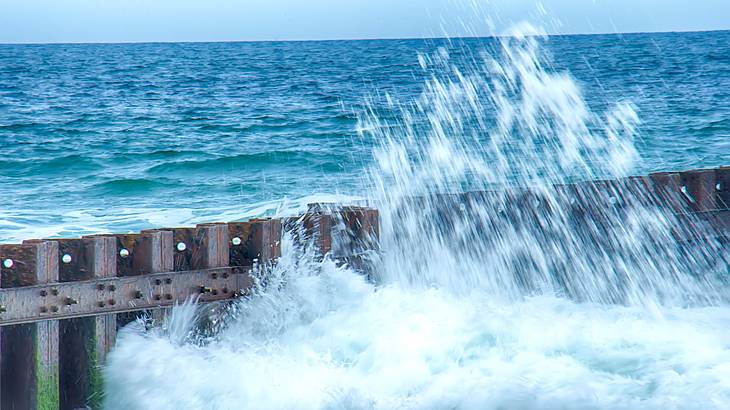
Cape Hatteras is very dangerous for sailors
Cape Hatteras in the Outer Banks has a history of being extremely dangerous. There are over 600 known shipwrecks within its treacherous waters, with 2,000 in total off of the Outer Banks.
This fact gave the waters the name "Graveyard of the Atlantic." Cape Hatteras in the Outer Banks has a history of being extremely dangerous.
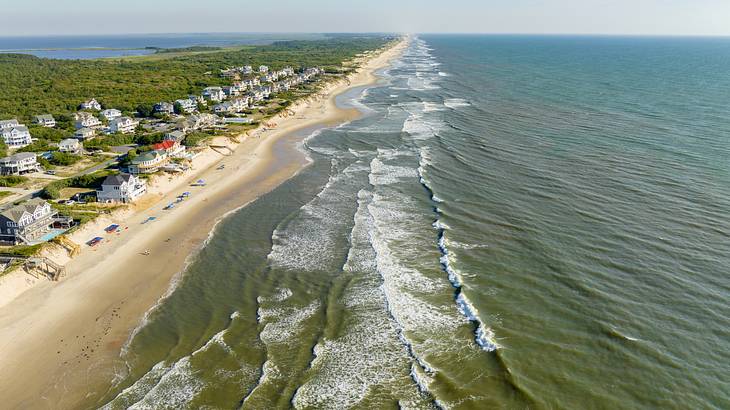
The pirate Blackbeard frequented the Outer Banks
The most famous pirate, Edward Teach, or Blackbeard, sailed the Outer Banks on his ship Queen Anne's revenge. In October 1718, he hosted a large pirate gathering in Ocracoke. In November 1718, he was killed by the Royal Navy in Ocracoke Inlet. Some say his treasure is still buried in the sands of Ocracoke!
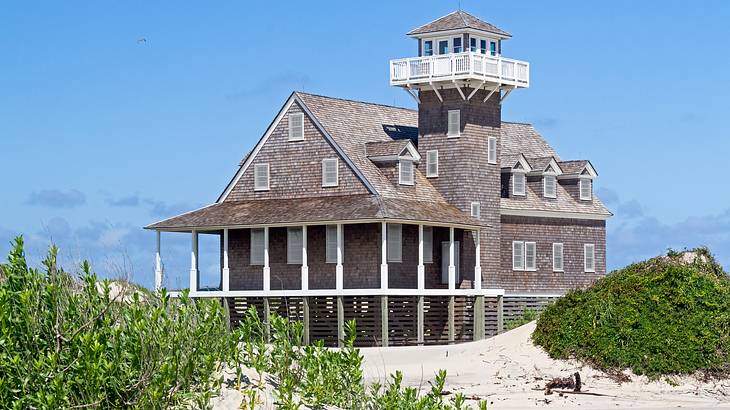
Pea Island employed the first black lifesaving station keeper
One of the more interesting Outer Banks historical facts relates to Pea Island's lifesaving station. In 1880, Richard Etheridge became the United States' first African-American lifesaving station keeper.
The former soldier served the post for 20 years until his death in 1900. To honor his service, he was posthumously awarded the Gold Lifesaving Medal in 1996.
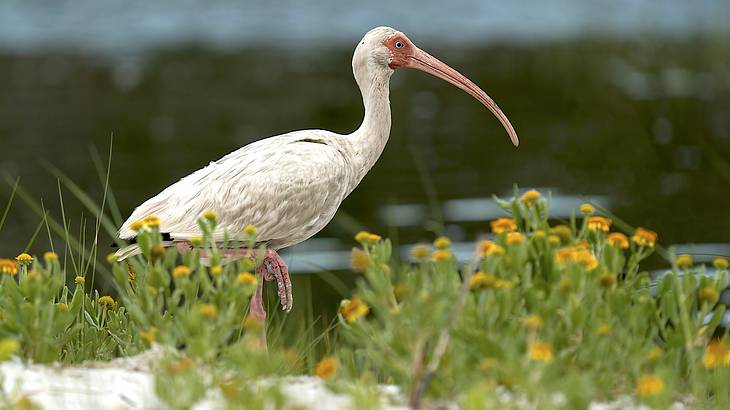
Pea Island National Wildlife Refuge is home to over 300 bird species
Found in northern Hatteras Island, Pea Island National Wildlife Refuge is home to approximately 370 different bird species.
These species include American kestrels, brown pelicans, falcons, and osprey. Other wildlife to spot includes loggerhead sea turtles, crabs, and otters.
Hatteras received one of the first distress calls from the Titanic
The Hatteras Weather Bureau Station was commissioned in 1902 to reduce disasters in the dangerous Outer Banks waters. On April 14, 1912, the station received distress calls from the RMS Titanic, saying it had hit an iceberg.
Unfortunately, like many others, the Hatteras station dismissed the call as a hoax because the Titanic was "unsinkable."
Many Civil War battles happened in the Outer Banks
During the Civil War, pivotal battles were fought on the Outer Banks, benefiting the Union. The Battle of Fort Hatteras and Fort Clark in August 1861 resulted in a significant victory for the Union. Another Outer Banks victory in 1862 at the Battle of Roanoke helped secure the ultimate winning of the war.
There were two slave safe havens on the Outer Banks
After the victory at the Battle of Roanoke, two safe havens for runaway slaves were created. These were the Hotel d'Afrique and the Roanoke Island Freedmen's Colony.
As the Union army forced the confederates out of North Carolina, slaves from across the state and further afield attempted to reach these havens.
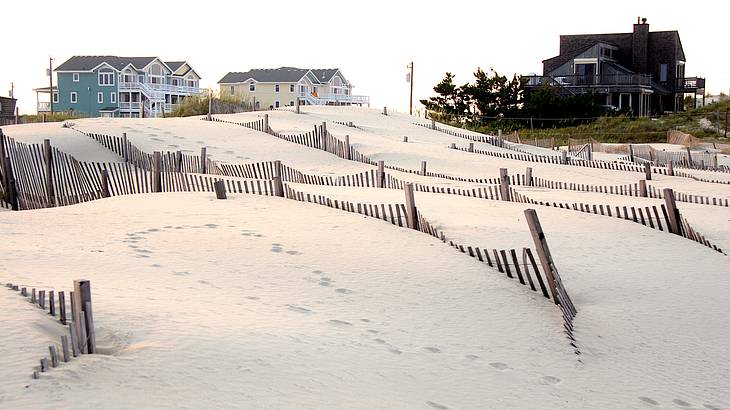
The Outer Banks has a population of just over 57,000
The entire Outer Banks has a small population of just over 57,000. Despite this, the area receives a minimum of one million visitors a year. Some even put the number of tourists visiting the Outer Banks annually at five million. These statistics mean there are approximately 17 to 87 visitors a year per one resident.
Native Americans played a big part in the Outer Banks' history
There is a lot of Native American history in the Outer Banks. It's believed that Native American tribes lived on the lands of the Outer Banks for thousands of years before the first English settlers came in the 1500s. Today, many towns still show reminders of this history and even get their names from Native Americans.
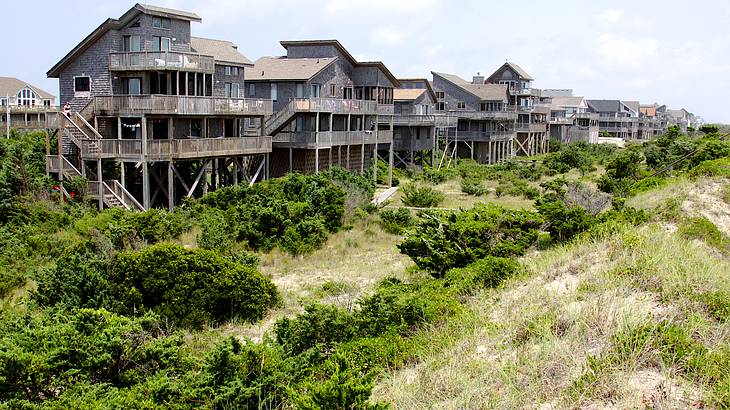
Many Outer Banks towns had Native American names
Many of the towns of the Outer Banks were originally named by Native American tribes. Manteo and Wanchese are still named after Native American leaders.
Hatterask was marked on an English map in 1585, from which Hatteras gets its name. Avon was called Kinnakeet, and Rodanthe and Waves were Chicamacomico. Some of the names have changed, but the history remains.
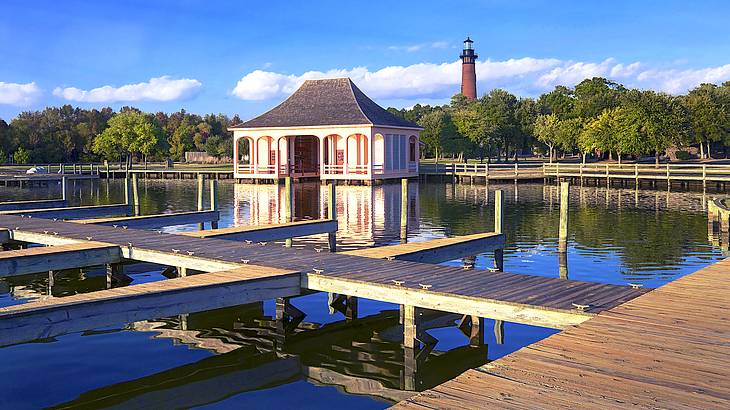
The Outer Banks is a popular wedding destination
Due to its Atlantic coastal beauty, the Outer Banks have become a popular place for destination weddings. Approximately 3,000 weddings a year are held in the area; that's the equivalent of eight a day! Wedding vendors have also grown in the last decade from 40-50 to 300.Curituck beach lighthouse park
Experiments for the first radio communication transmission occurred here
Known as the father of voice radio, Reginald Fessenden made the first radio communication transmission. The basis of this would go on to be used in commercial radio broadcasting. Many of his experiments were conducted on Outer Banks. In 1902 a 127-word voice message was sent from Cape Hatteras to Roanoke Island.
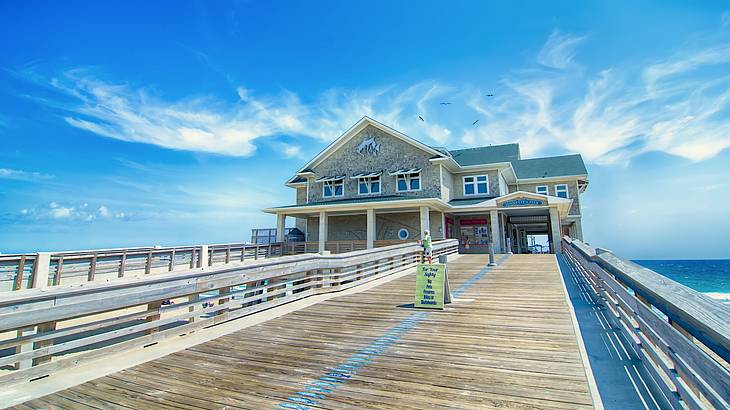
There is a Netflix drama about the Outer Banks
This Outer Banks fun fact made the area a household name. The Netflix show, called Outer Banks, premiered in April 2020. It centers around a group of teenagers, some of whom live on the Outer Banks while others vacation there.
While looking into the disappearance of one of their fathers, the group uncovers Outer Banks treasure tied to him.
The Outer Banks show wasn't filmed on the Outer Banks
The show wasn't filmed in North Carolina but was instead filmed in Charleston, South Carolina. The producers intended to film in North Carolina, but the location moved after the state passed their controversial "bathroom bill."
This bill states that you must use the bathroom that corresponds to your birth gender. It was not something the show's Millennial and Gen Z cast and fans supported.
Whalehead was a secret testing location for rocket fuel
The famous Whalehead Club in Corolla was used to test rocket fuel during the cold war. The club got leased to the Atlantic Research Corporation.
The company was researching Beryllium, a toxic but heavy-duty rocket fuel. The remoteness of the island was perfect for secretly testing this toxic substance.
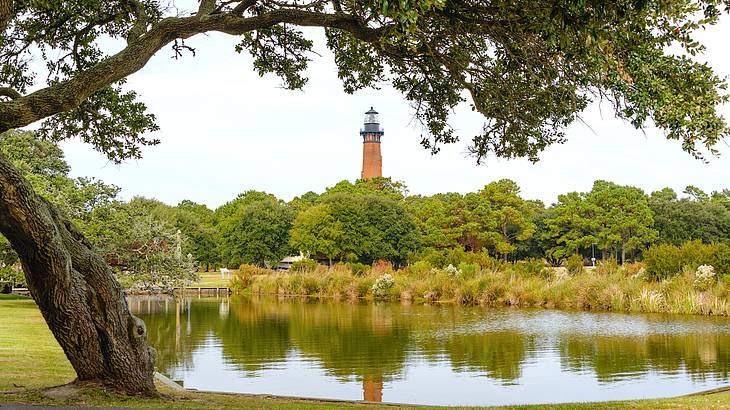
The Outer Banks have the most stunning maritime forests in the US
The Outer Banks is full of natural beauty, and one of many Outer Banks NC facts about nature is that the area has some of the best examples of maritime forest in the US. Both the forests at Currituck Banks Reserve and Nags Head Woods Preserve are particularly stunning OBX forests.
The Whalehead Club housed US soldiers
Another Outer Banks fun fact about the Whalehead club! During WWII, protecting the North Carolina shoreline was a top priority.
The Whalehead Club was an ideal site to station soldiers at so they could protect the coast. Up to 300 soldiers were here at one time.
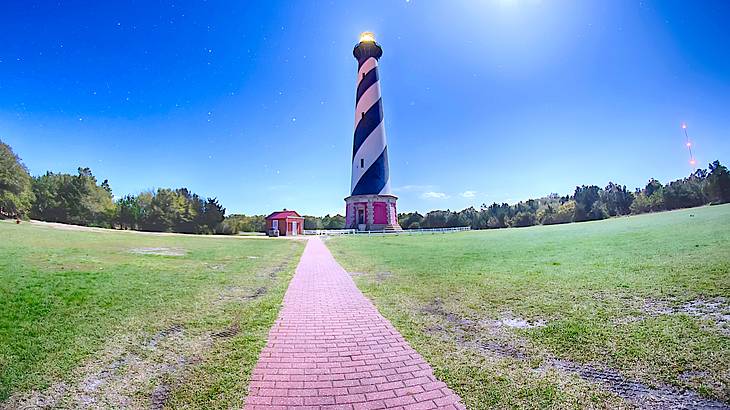
Cape Hatteras Lighthouse has been moved
It's been mentioned that Cape Hatteras Lighthouse is the tallest brick lighthouse in the US, but did you know it was moved? The lighthouse was moved 2,900 feet over 23 days in 1999. It moved away from the shore to protect it against coastal erosion.
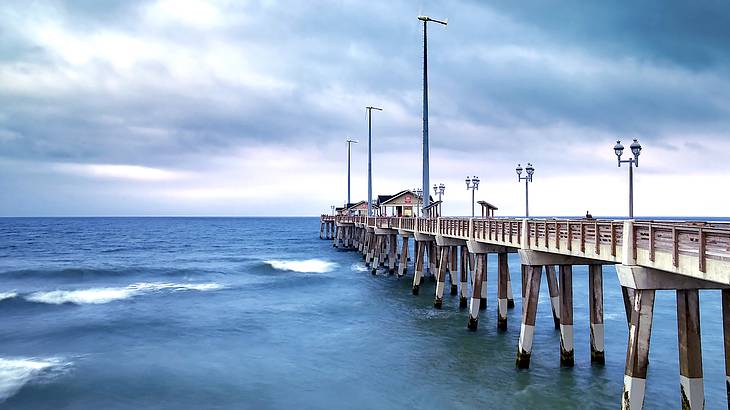
The Outer Banks are under threat from climate change
Not so much a fun fact, but definitely an important one! Like many natural ecosystems, climate change is damaging the Outer Banks.
Increasingly frequent and intense storms and sea-level rise are causing the sandbar chain to collapse. Luckily, there is still time to reverse these effects and save the Outer Banks for future generations.
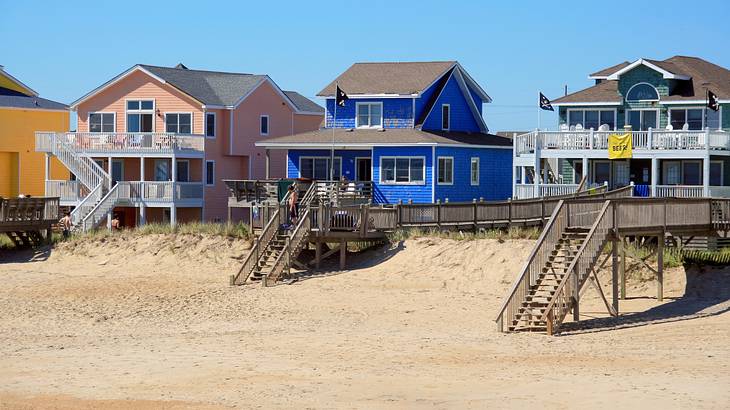
OBX is somewhat of an advertising term
Another of the interesting facts about the Outer Banks, North Carolina, refers to how the area got its nickname, OBX. A restaurateur created the Outer Banks abbreviation OBX to sell merchandise.
Jim Douglas saw ACK stickers sold to tourists in Nantucket and decided to do the same in the Outer Banks. In 1994, he started selling OBX stickers, and now the term is seen on tourist merchandise all over the Outer Banks.
The Oldest Grapevine in the US is found in OBX
The oldest grapevine in the United States is called the "Mother Vine" and is found on Roanoke Island. It is thought to have been planted by colonists or the Croatan tribe in the 1500s. The vine grows Scuppernong grapes, a variety native to the southern US.
The Outer Banks briefly had an extra island
Another of many interesting facts about the Outer Banks of North Carolina shows what a unique ecosystem the area is! In 2017, a new small sandy island was formed at Cape Point.
It was named Shelly Island due to the abundance of shells on the sand. By early 2018, the island had vanished entirely.
Some former Outer Banks residents make money from shipwrecks
The 17th and 18th-century residents, known as wreckers, would scavenge the many shipwrecks in the waters of the Outer Banks for treasure.
Others would even lure ships in to make them crash before looting them. Wreckers were not considered pirates as they caused havoc from the shores, not the sea.
Duck in the Outer Banks is the founding town of a popular donut chain
Duck Donuts was founded in Duck on Outer Banks, North Carolina, in 2006. Along with their flagship location in Duck, the chain has almost 100 stores across the US, plus one in Puerto Rico. Delicious donut flavors available include Peach Cobbler, Peanut Butter and Jelly, and S'mores.
In Conclusion
The Outer Banks is a beautiful area of North Carolina packed full of history, culture, and memorable attractions. There are, of course, several interesting and fun facts about the Outer Banks of North Carolina, including those covered here. Hopefully, you enjoyed learning more about this incredible area of The Atlantic seaboard!
If this article convinced you to plan an OBX vacation, there are many airports close to the Outer Banks, making it easy to get to. If you need some help deciding what to do, then also check out this seven-day Outer Banks itinerary!
Want to keep exploring?
Subscribe for discounts on tickets and hotels and our latest guides.
Thank you for subscribing
We will be in touch soon with discounts on tickets and hotels and our latest guides.
Want to keep exploring?
Subscribe for discounts on tickets and hotels and our latest guides.
Thank you for subscribing
We will be in touch soon with discounts on tickets and hotels and our latest guides.

